Guide to the Collection of South Italian and Sicilian Terracottas
Claire L. Lyons
An annotated list of the more than 1,000 terracottas in the collection of the J. Paul Getty Museum
The following guide is a supplement to Ancient Terracottas from South Italy and Sicily in the J. Paul Getty Museum. In addition to the sixty objects studied in depth by Maria Lucia Ferruzza, the museum holds a quantity of statuettes, sculptures, and artifacts that have not been closely analyzed; many remain largely unpublished. Spanning the centuries between 5000 BC and the second century AD, small numbers of Neolithic, Mycenaean, Cypriote, Greek (Boeotian and Tanagra), East Greek (Rhodian, Samian, and Mysian), Etruscan, Romano-Egyptian, and Roman figurines were acquired individually. By far the largest group of terracottas, however, consists of votive dedications from sanctuaries and cemeteries in Puglia, Lucania, Calabria, Campania, and Sicily. Most were donations received in the 1970s and 1980s and destined to form a study collection.
With the aim of facilitating further research on this material, this guide indexes over 1,000 terracottas. Two major lots consist of fragmentary figures that can be associated with Taranto and Metaponto, while a third lot and other individual pieces are more generally identified with workshops in southern Italy. Although the lack of documentation makes it difficult to ascertain whether some extraneous objects were mixed in with these lots, the repetition of types and the consistency of the fabric suggest that these assemblages were found together in votive deposits. The focus of Ancient Terracottas is extended here in two key areas. This guide includes several female heads from a mold series known in Capua, as well as a significant group of statuettes likely to have come from Teano, which reflect the links between Campania and production centers in Magna Graecia and Latium. Important for any study of the rich coroplastic traditions of the Italian peninsula is the series of thirty-nine molds, mainly made in Taranto, four of which are inscribed with the coroplast’s name or monogram.
The collection of portable, mass-produced terracottas, including Canosan figural vessel appliqués (but excluding lamps, plastic vases, and architectural sculpture), is indexed below according to the region of origin. Object information and images can also be accessed on the Museum’s online collection pages (www.getty.edu/art/collection), which will be updated as new discoveries are made. The brief descriptions below are based on the information supplied at the time of acquisition, from publications, and more recent observations.
Download the Dataset: CSV | JSON
For further research and study, the dataset available for download here includes information on the 60 main catalogue objects as well as the 1,000 additional collection objects indexed below. It is current to the date of publication.
Taranto
-
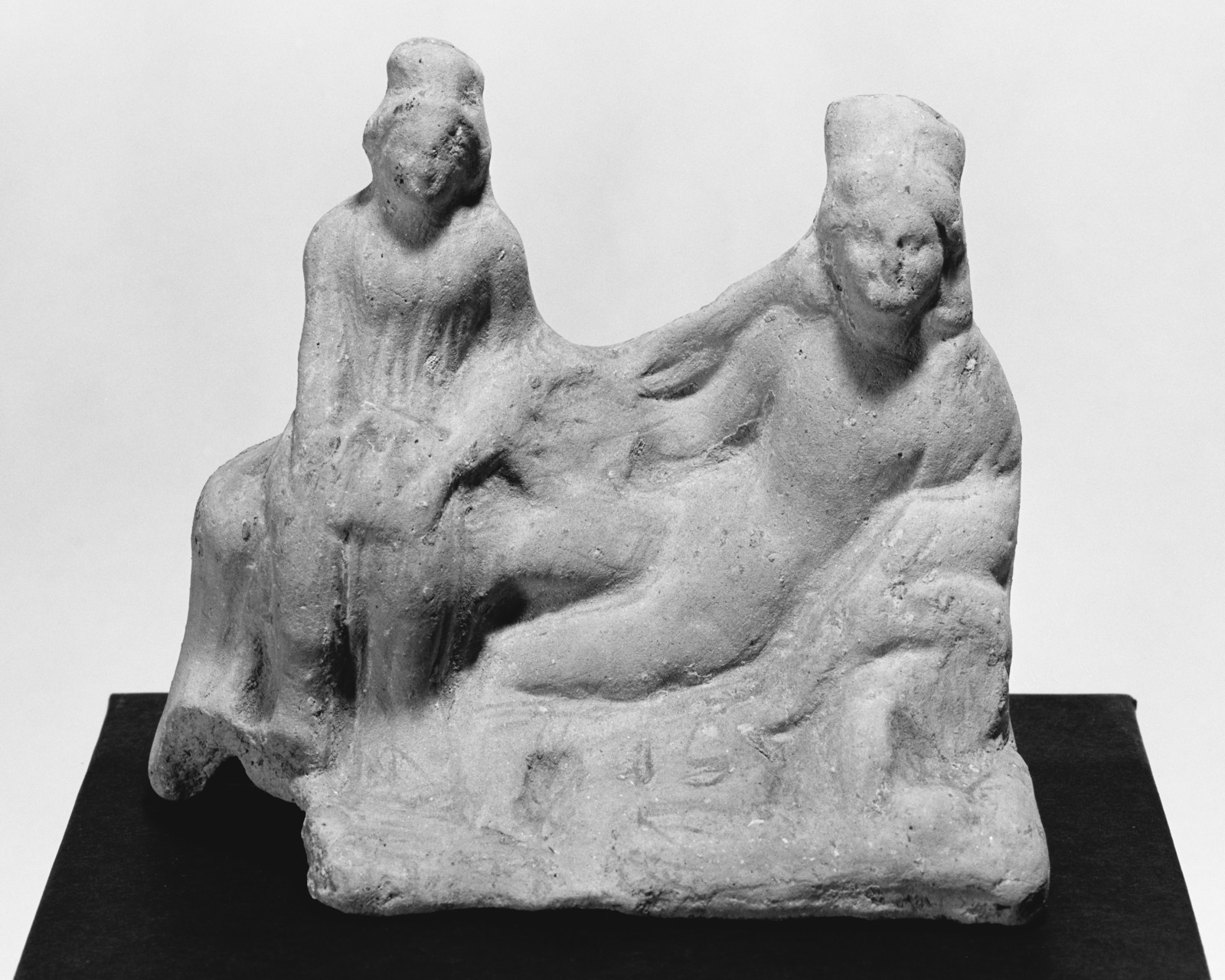
Figure 1: 71.AD.311, 9.7 x 10.7 cm 71.AD.311: (fig. 1) Banqueting couple; late fourth–third century BC. See Kingsley 1976, p. 6, no. 10, fig. 10; and B. M. Kingsley, “The Reclining Heroes of Taras and Their Cult,” California Studies in Classical Antiquity 12 (1979), p. 205, n. 75.
-
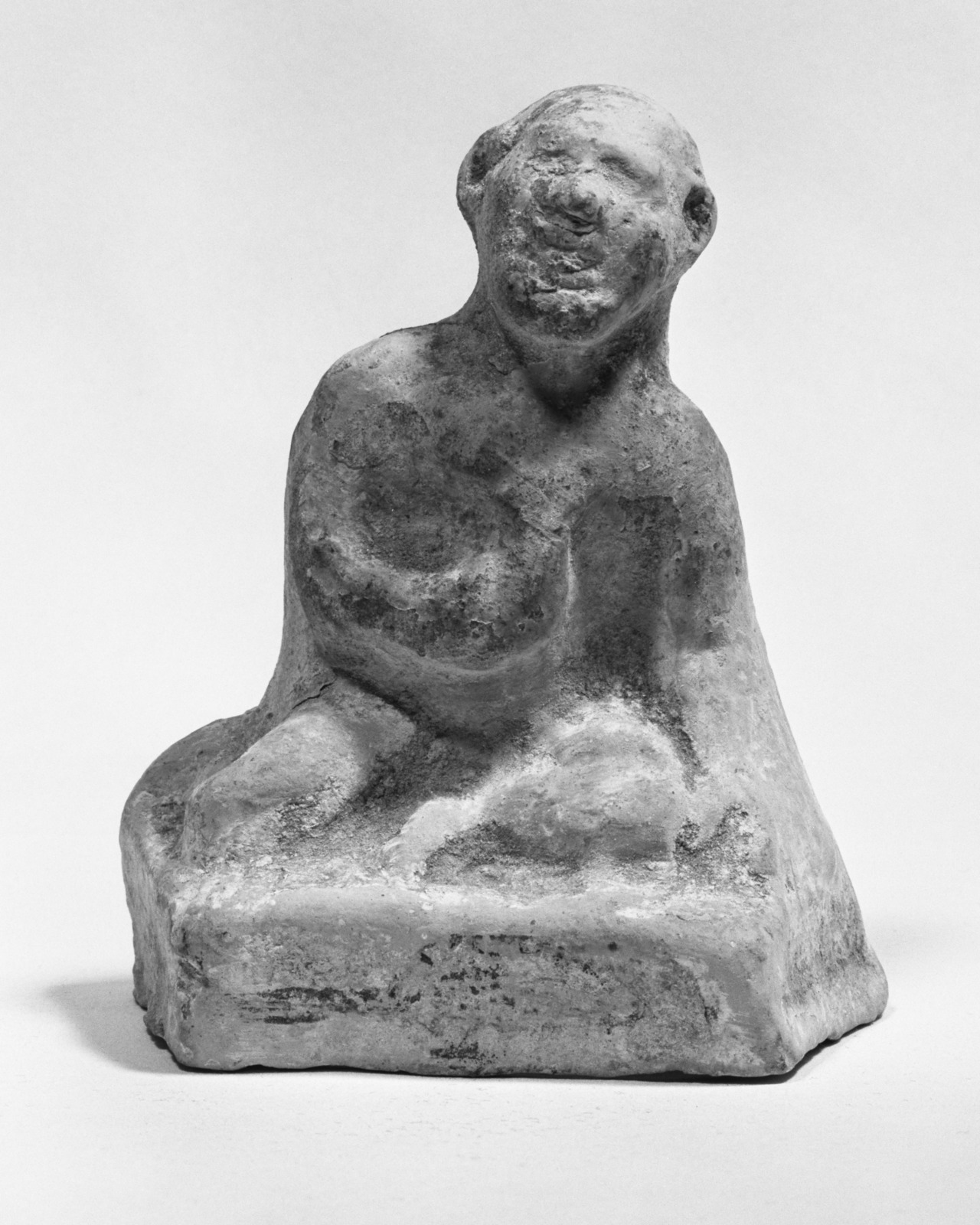
Figure 2: 71.AD.339, H: 8 cm 71.AD.339: (fig. 2) Crouching satyr with protruding ears, looking upward with his right hand on his chest; early fourth century BC. See Alex G. Malloy, Ancient Art and Antiquities (1971), vol. 1, pp. 12, 16, no. 91.
-
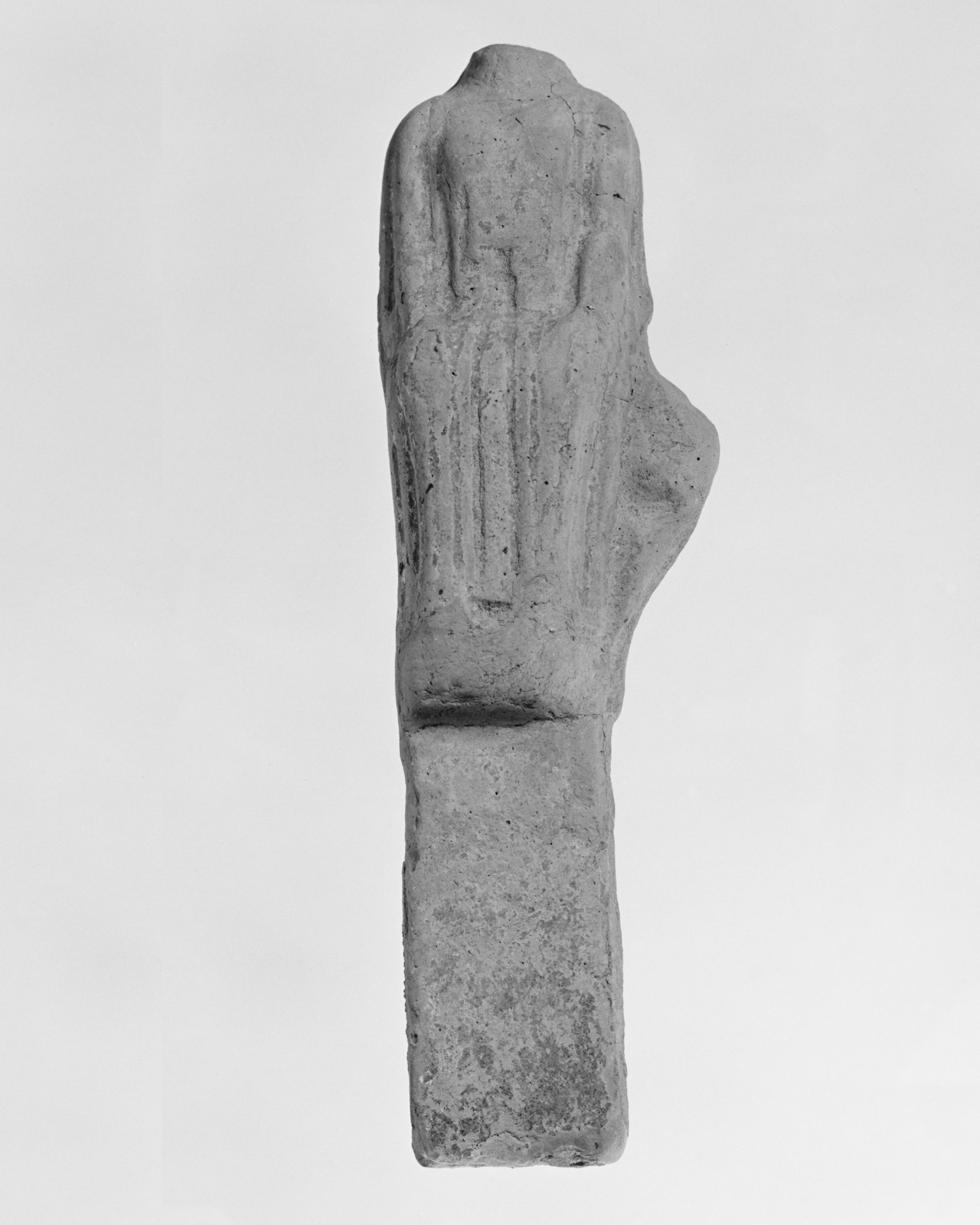
Figure 3: 75.AD.36, H: 16.8 cm 75.AD.36: (fig. 3) Seated woman, headless, from a banquet group, with a vertical tang to hold the figure upright; fourth century BC. See Kingsley 1976, p.6, no. 7, pl. 7.
-
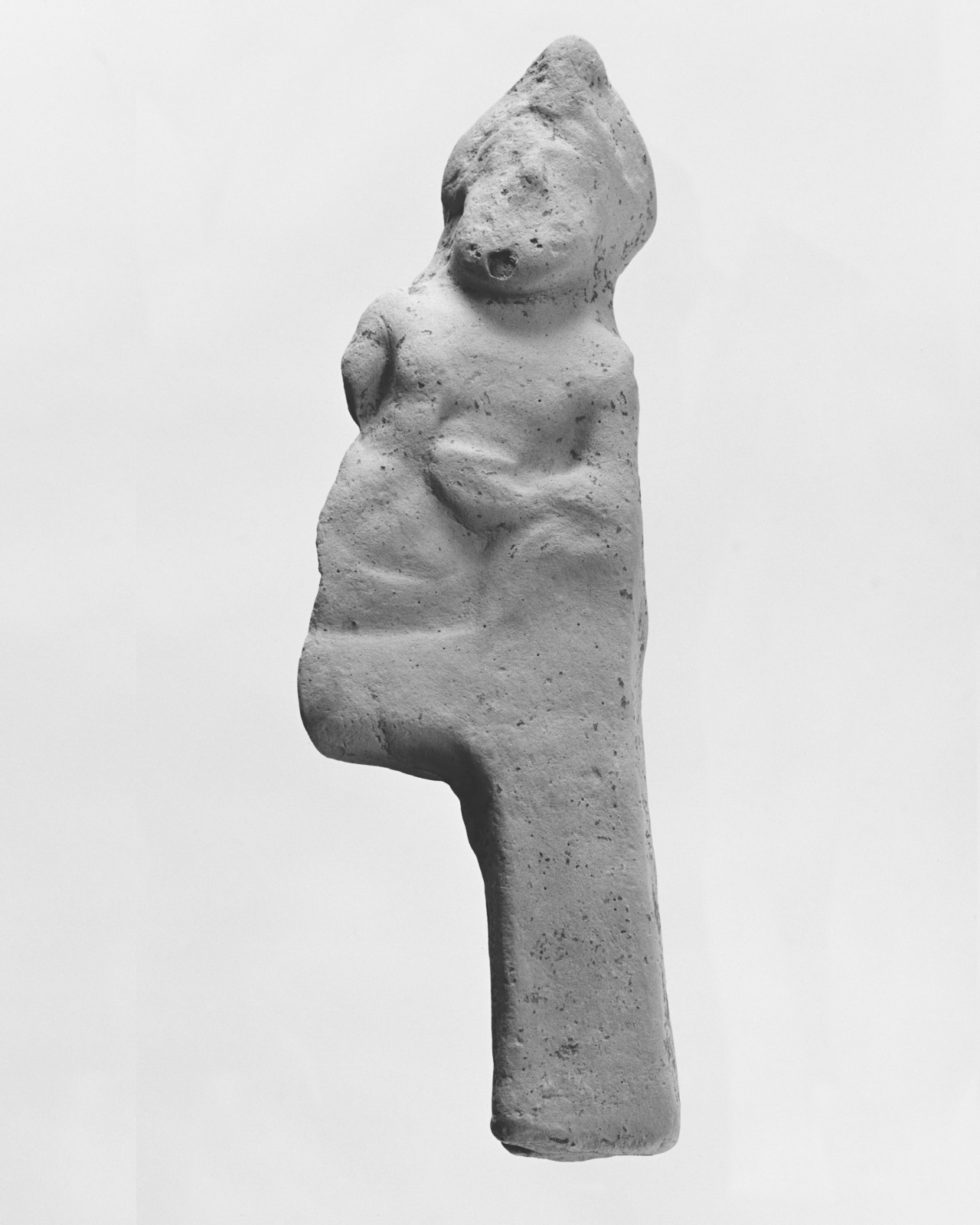
Figure 4: 75.AD.37, H: 17.5 cm 75.AD.37: (fig. 4) Male banqueter, bearded, reclining and holding a cup, with a vertical tang to hold the figure upright; fifth century BC. See Kingsley 1976, p. 5, no. 4, pl. 4.
-
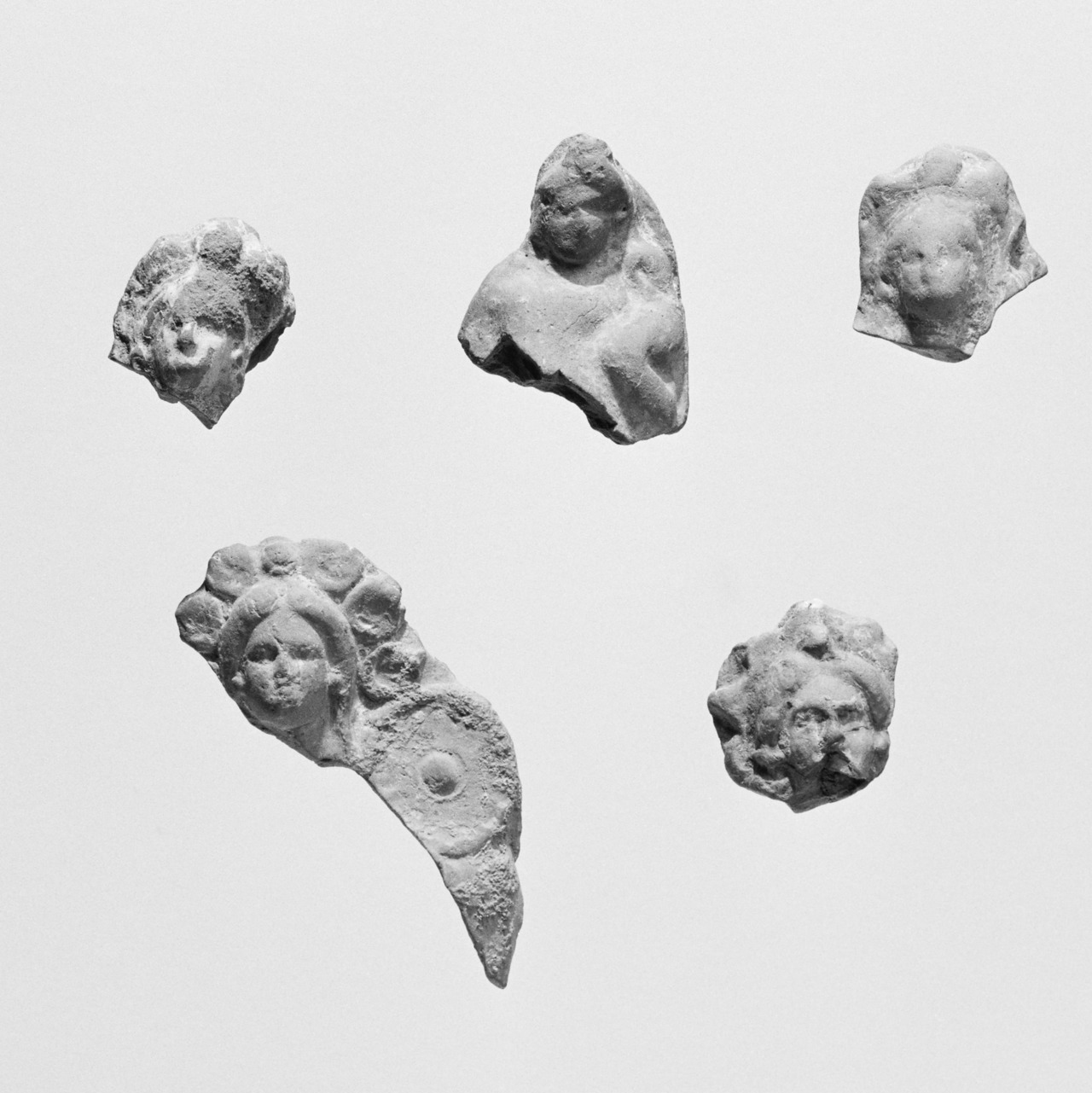
Figure 5 (clockwise from top left): 75.AD.40.H.2; 75.AD.40.A.1; 75.AD.40.N.5; 75.AD.40.I.14; 75.AD.40.I.19. The largest object, 75.AD.40.I.14, is 8.8 cm in height. 75.AD.40.A.1–75.AD.40.O.7: (fig. 5) Group of 90 small heads of women wearing floral crowns, averaging 2 cm in height. Most are broken off at the neck, and the facial features are worn. One figure (75.AD.40.I.14) has a disc/phiale at her left shoulder; three statuettes of women bearing a torch (75.AD.40.I.6, 75.AD.40.J.1, 75.AD.40.J.2); fourth century BC. Gift of Fred and Virginia M. Bromberg, Bay Shores, NY.
-
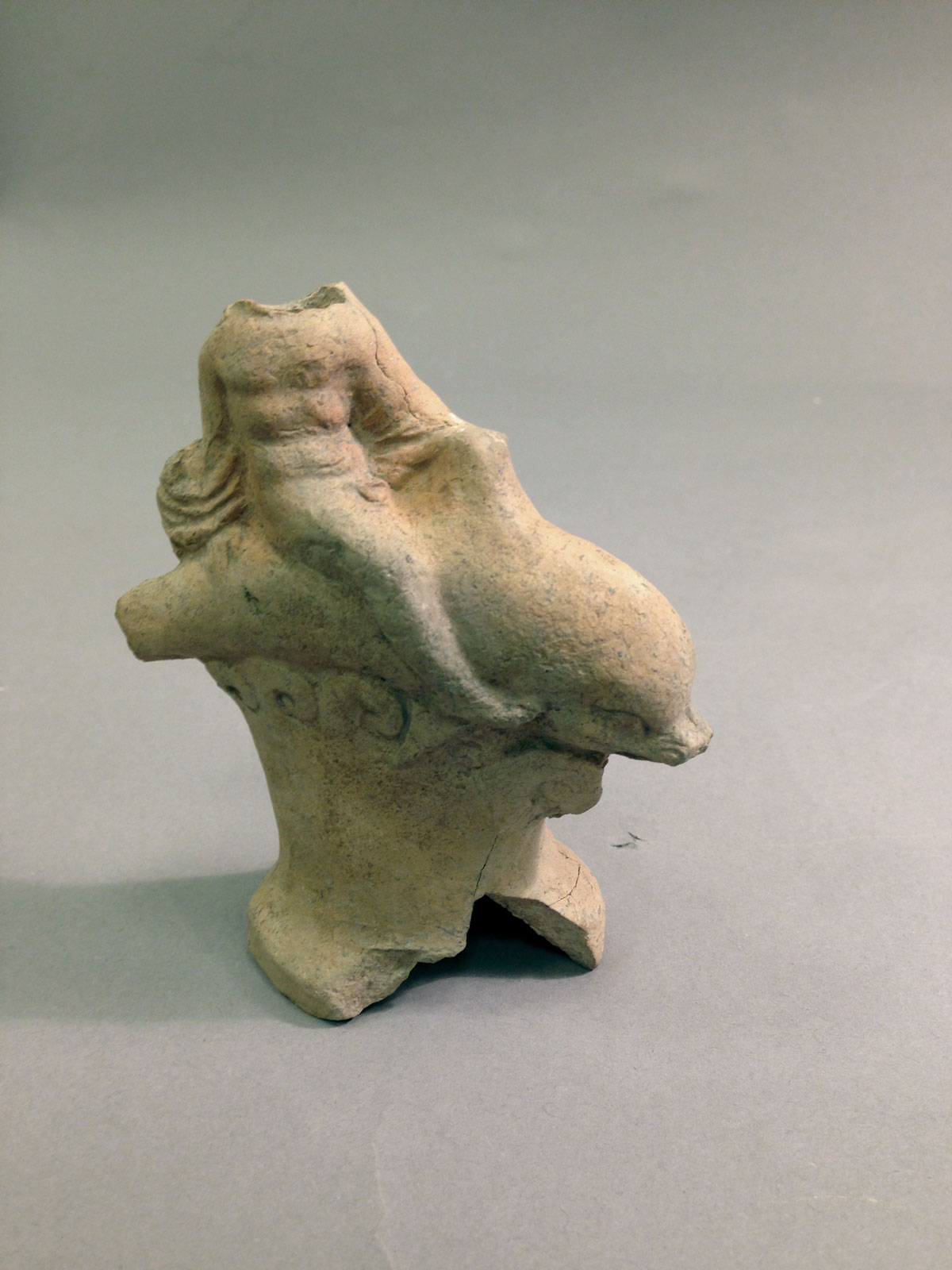
Figure 6: 78.AD.271.4 (reference image), 10.2 x 8.2 cm 78.AD.271.4: (fig. 6) Naked youth, often identified as the hero Taras, with drapery flying behind, riding a dolphin across waves. The figure is supported on a cylindrical base, and the head of the youth and tail of the dolphin are missing; fourth–third century BC. Gift of Gordon McClendon.
-
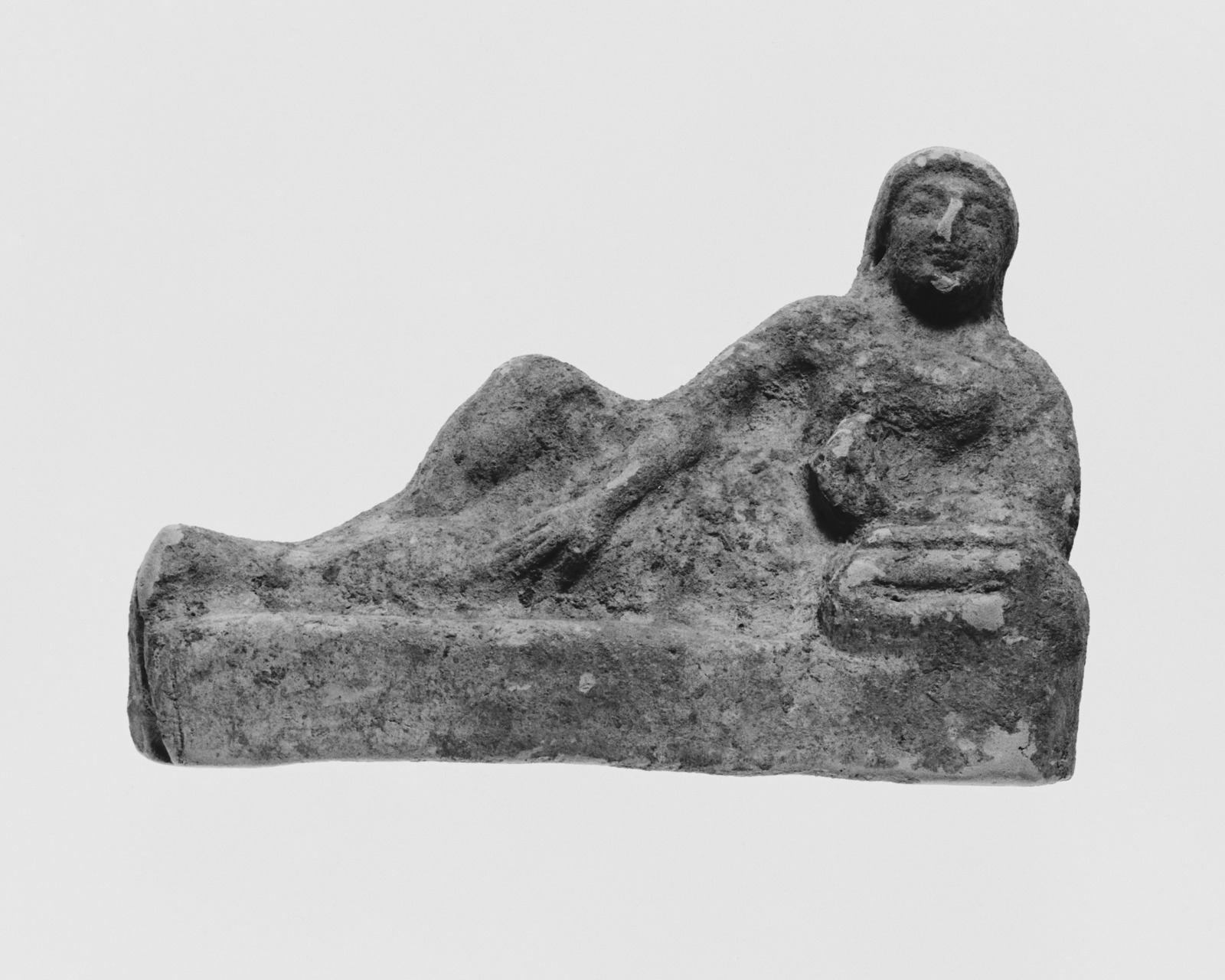
Figure 7: 78.AD.344, 9.5 x 14.6 cm 78.AD.344: (fig. 7) Reclining male banqueter; early fifth century BC. Gift of David Collins.
-
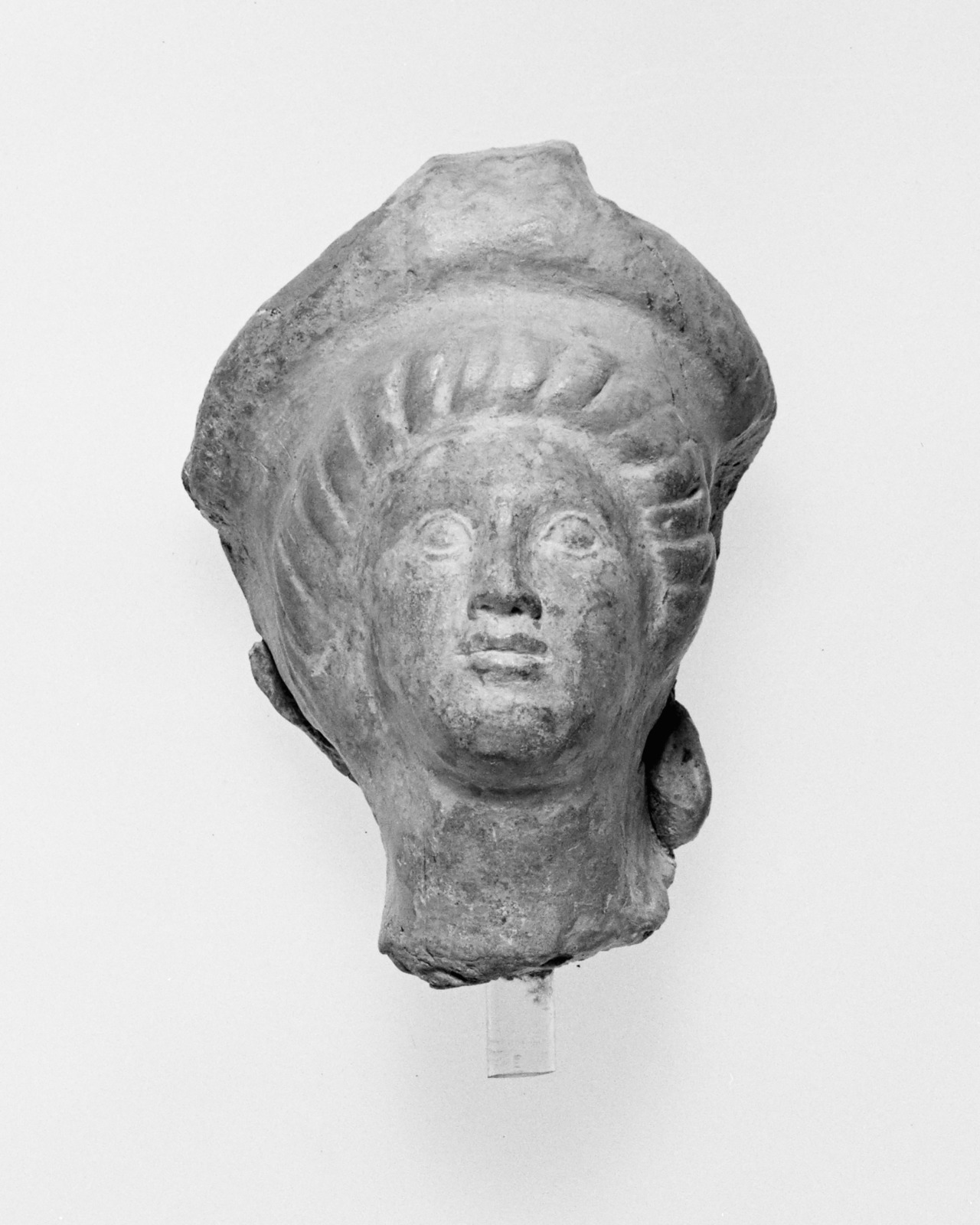
Figure 8: 80.AD.74, H: 9 cm 80.AD.74: (fig. 8) Head of a young woman wearing a polos; late fifth century BC. Gift of J. P. Grosz.
-
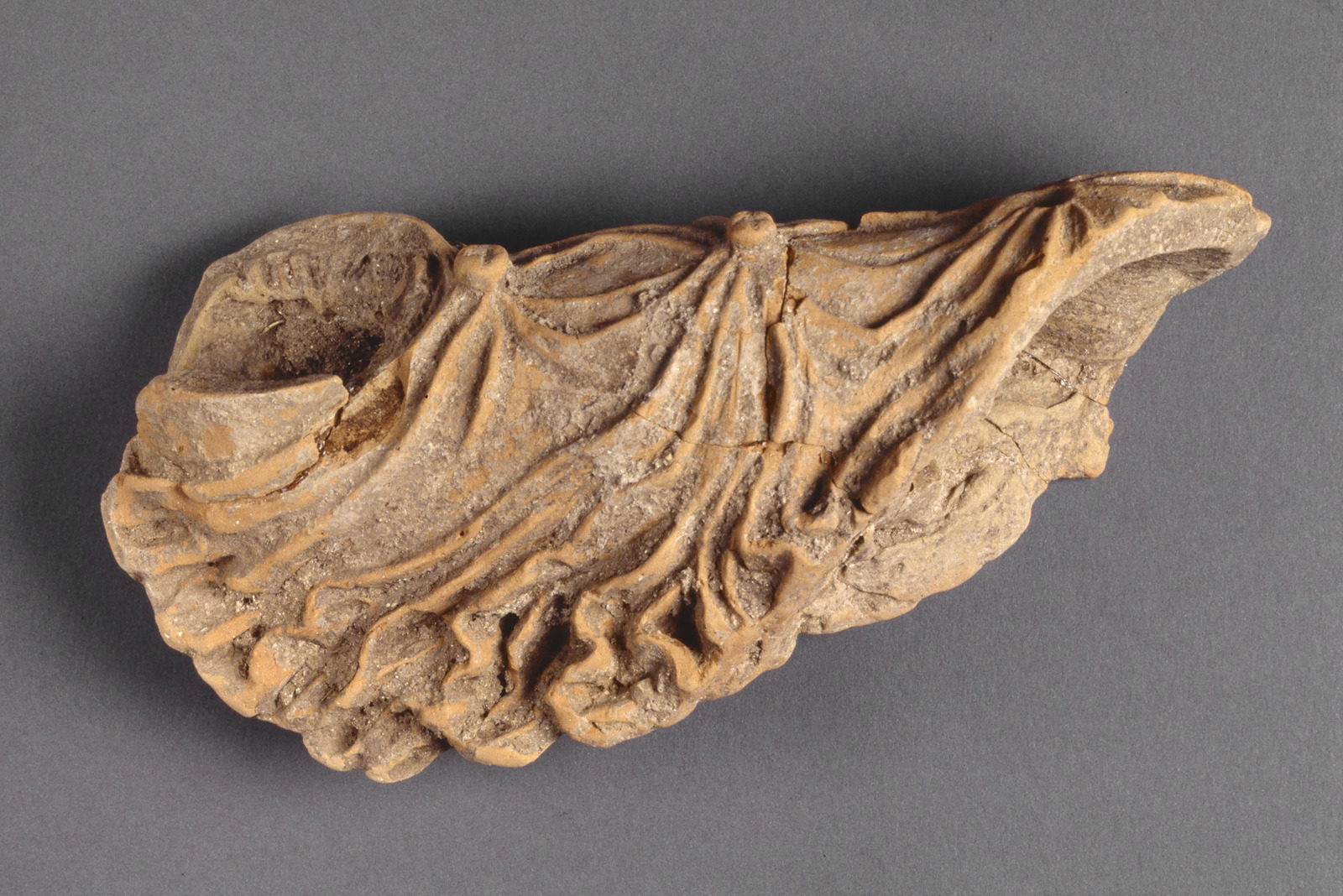
Figure 9: 83.AD.354.15, L: 22.5 cm 83.AD.354.1–394: A group of 394 fragments that comprise 292 votive objects, consisting of types associated with the areas of Taranto (272), Apulia (1), and Metaponto (55; see below for further discussion of the Metapontine examples), with the remainder from unidentified South Italian workshops. The earliest Tarentine votives in this lot date from the sixth to fifth centuries BC and depict figures of a standing goddess with a snake, a sphinx, a head of a woman wearing a conical polos, and a pair of seated goddesses. One fragment of the upper arm of a woman wearing a chiton fastened by three buttons (83.AD.354.15; fig. 9) is close to life size. A small number (21 objects) are fourth-century BC types: squatting silenos, head of a silenos or papposilenos, satyr playing flutes, heads of comic actors, and female heads and figures. The majority of the objects belong to the third century BC, with a great variety of figures and heads of women with melon coiffeurs (standing and seated, draped and nude female figures; dancer; mother and child). Also present are figurines of animals (dogs, cat, coiled snake, birds, horse, ape on a lion’s back, lion, turtle, animals mounting, cow?, boy riding a pig); mythological figures (Aphrodite leaning against a pillar, standing nude figures of Aphrodite, Nike, Eros); and a small number of male figures (head of a boy, torso). Gift of Stefan Hornak.
Terracotta Molds
Thirty-nine molds depict types that belong to the repertoires of Tarentine and, more generally, South Italian terracottas. Seven molds acquired in 1973 were part of a group of 430 fourth-century BC terracottas, mainly representing female heads (see 73.AD.10 under “South Italy”). In 1974, 1975, and 1976, three groups of Tarentine molds came to the Getty from the collection of Norman Neuerberg. These molds produced figurines in the round and reliefs for decorative appliqués. Four examples are marked with the names or monograms of Tarentine coroplastic workshops.
-
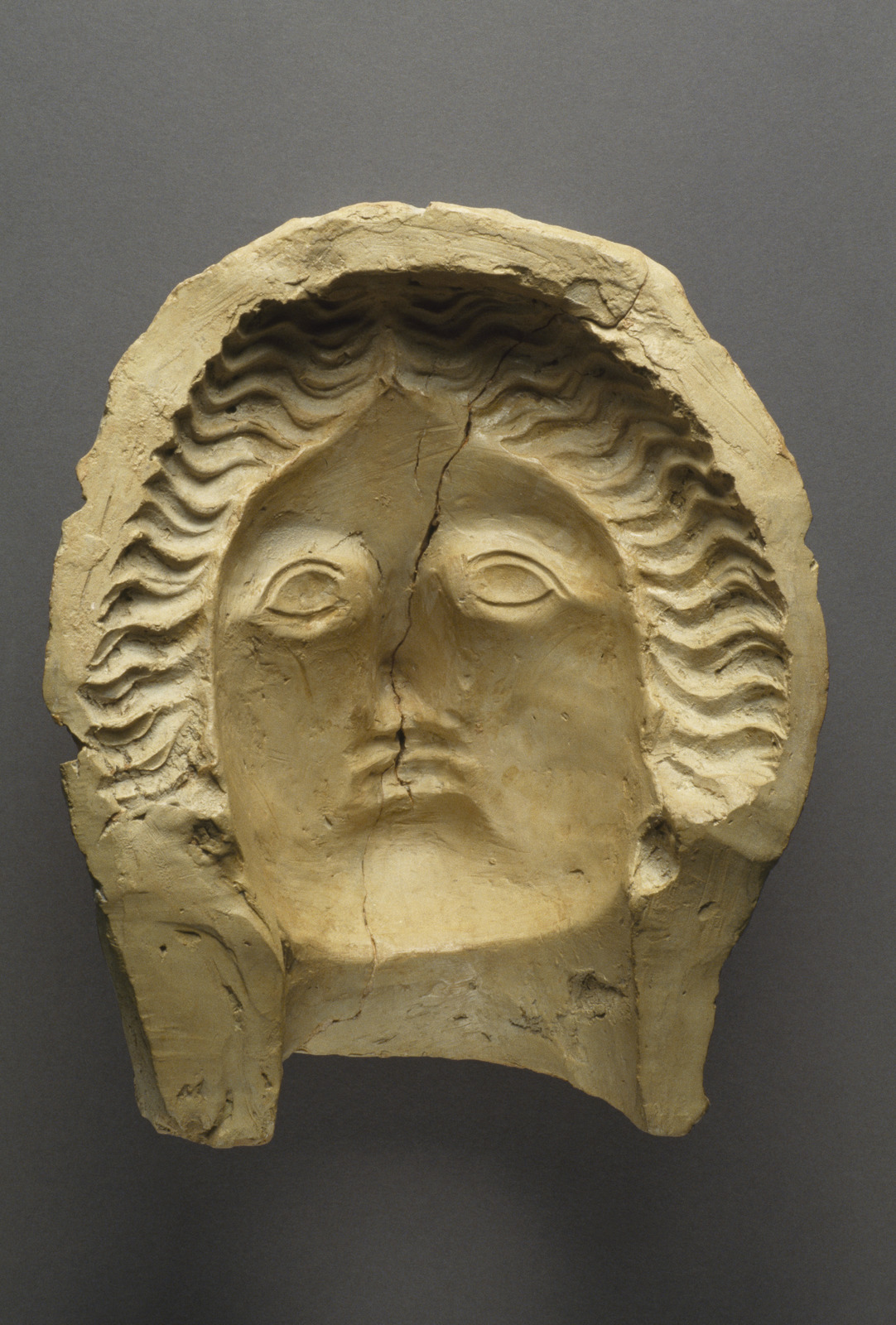
Figure 10: 71.AD.363, 25 x 21.5 cm 71.AD.363: (fig. 10) Head of a woman, wearing a pendant earring in her right ear; Tarentine front mold for a life-size funerary bust, with triangular string marks on the top and sides; fourth century BC. See Kingsley 1976, p. 8, no. 17, pl. 17.
-
73.AD.10.C.2.a: and b: Unidentified South Italian mold fragments.
-
73.AD.10.H.1: Arm, South Italian; fourth century BC.
-
73.AD.10.H.2.a: and b: Bull being led to sacrifice and secured to the ground by a rope, South Italian front mold; fourth century BC. See Kingsley 1976, p. 13, no. 37, pl. 37.
-
73.AD.10.H.3: Woman wearing a veiled polos; Tarentine front mold; fourth century BC. See Kingsley 1976, p. 5, no. 8, pl. 8.
-
73.AD.10.H.4: Tanagra-type head of a woman, South Italian back mold; fourth century BC. See Kingsley 1976, p. 10, no. 21, pl. 21.
-
73.AD.10.H.5: Bust of a woman, South Italian front mold; fourth century BC. See Kingsley 1976, p. 11, no. 29, pl. 29.
-
73.AD.10.H.6: Unidentified torso, South Italian; fourth century BC.
-
74.AD.53: Draped woman (Persephone) wearing a veiled polos, holding a crossed torch against her right shoulder and a basket of offerings in her left arm. The coiffeur—a double row of shell curls—hand, and torch have been recut. Tarentine front mold; inscribed [DION]YSIO(Y), AL (the shop of AL and Dionysios); mid-fourth century BC. See Kingsley 1976, cover and pp. 6–7, no. 12, pl. 12; Kingsley 1981, pp. 47–50, no. C.4, figs. 2 and 9; and Ferrandini Troisi, Buccoliero, and Ventrelli 2012, p. 184, no. 45.
-
74.AD.54: Head of a woman wearing a stephane, turned slightly to proper right, representing Aphrodite or Artemis, and inscribed LY. Tarentine front mold; the cavity of which is worn and has not been retouched; mid-fourth century BC (from a prototype of about 350 BC). See Kingsley 1976, p. 9, no. 19, pl. 19; Kingsley 1981, pp. 45–46, no. A.1, figs. 1 and 5 (incorrectly cited as 74.AD.22); and Ferrandini Troisi, Buccoliero, and Ventrelli 2012, p. 184, no. 43 (incorrectly cited as 74.AD.22).
-
74.AD.55: Nude boy holding a goose in his left arm; Tarentine front mold, retouched; fourth century BC. See Kingsley 1976, pp. 10–11, no. 25, pl. 25.
-
74.AD.56: Seated nude woman wearing a polos, with a decorative rosette beside her right shoulder; sixth-generation mold for a funerary statuette (of Aphrodite?) originally wearing a sheer chiton; fourth century BC. See Kingsley 1976, p. 7, no. 14, pl. 14.
-
74.AD.57: Head and torso of a woman holding a phiale, with a lampadion coiffeur; made from a Tarentine single mold as a half-round figure; fourth century BC. See Kingsley 1976, p. 11, no. 28, pl. 28.
-
74.AD.58: Right side of horse’s head; string marks indicate that the figure was in the round, and a notch at the lower edge served to attach the head to the animal’s body; Tarentine front mold; fourth century BC. See Kingsley 1976, p. 12, no. 32, pl. 32.
-
74.AD.59: Head of a banqueting Silenos wearing a fillet; Tarentine front mold; fourth century BC. See Kingsley 1976, p. 6, no. 9, pl. 9.
-
74.AD.60: Standing girl wearing a high-waisted chiton; Tarentine back mold of a Tanagra type; fourth century BC. See Kingsley 1976, pp. 10–11, no. 23, pl. 23.
-
74.AD.61: Nude winged daimon wearing boots and holding a liknon (winnowing basket); Tarentine front mold; fourth century BC. See Kingsley 1976, p. 13, no. 35, pl. 35.
-
74.AD.62: Lion fighting bull; Tarentine mold for making a sarcophagus appliqué; fourth century BC. See Kingsley 1976, p. 14, no. 38, pl. 38; and Lullies 1977, p. 254.
-
75.AD.41: Ornamental disc with a central rosette and relief ornaments; Tarentine; fourth century BC.
-
75.AD.42: Daedalic bust of a woman wearing a peplos, mantle, and polos; Tarentine; late seventh century BC. See Kingsley 1976, p. 4, no. 1, pl. 1.
-
75.AD.43: Reclining male banqueter holding a rhyton in his left hand, right hand resting on his right knee; Tarentine; late sixth–fifth century BC. See Kingsley 1976, p. 4, no. 2, pl. 2; and B. M. Kingsley, “Reclining Heroes of Taras,” pp. 201–20, pl. 1.1–2.
-
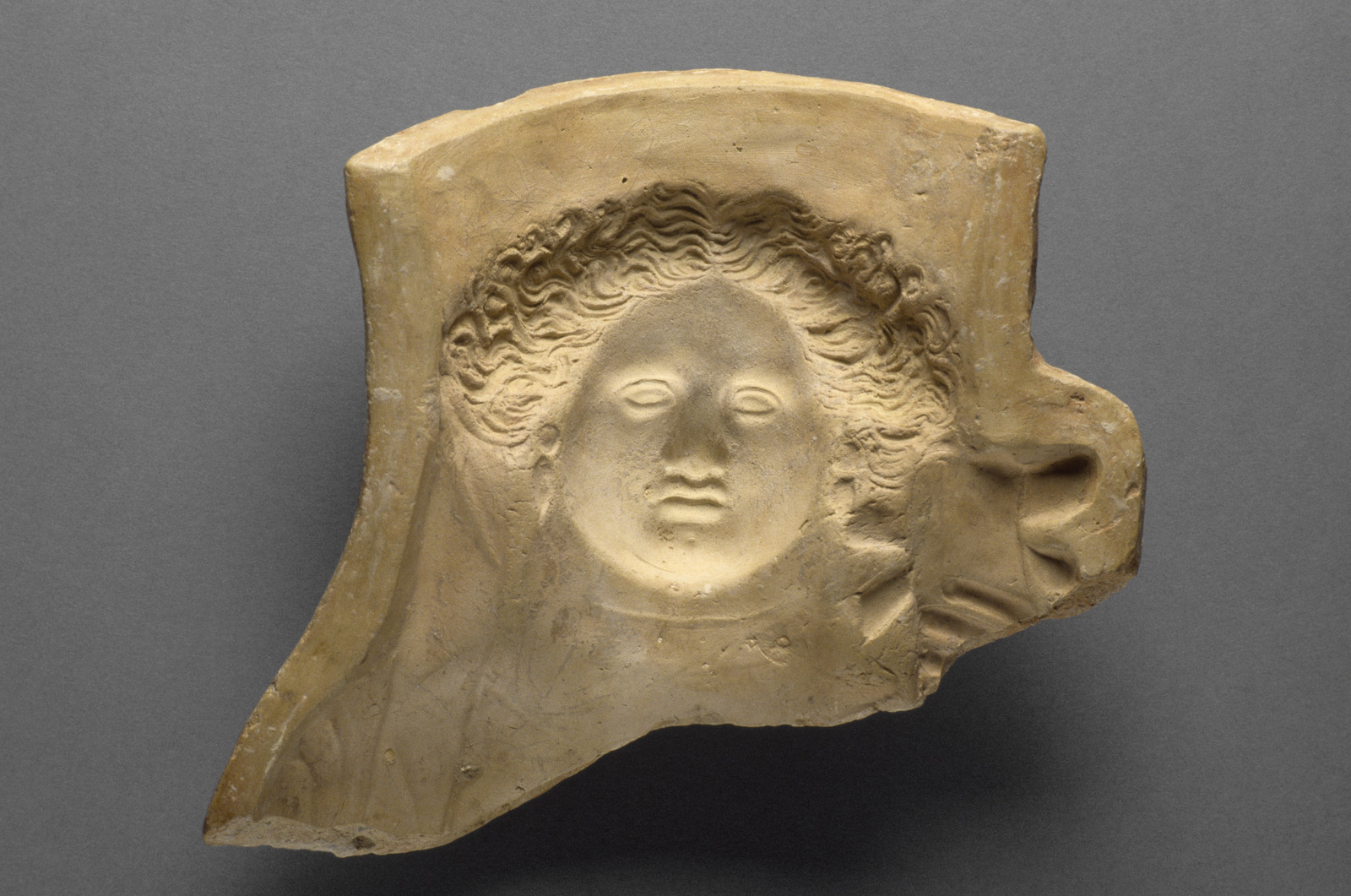
Figure 11: 75.AD.44, H: 17.8 cm 75.AD.44: (fig. 11) Bust of Demeter or Persephone wearing a veiled polos and holding a crossed torch at her right shoulder; inscribed [ZO]PY[RAS], RA (the shop of Zopyras, RA, and LA); Tarentine front mold, 350–325 BC. See Kingsley 1976, p. 7, no. 13, pl. 13; Kingsley 1981, pp. 50–51, no. E.10 (incorrectly cited as 74.AD.44); figs. 3 and 13; and Ferrandini Troisi, Buccoliero, and Ventrelli 2012, p. 184, no. 44 (incorrectly cited as 74.AD.44).
-
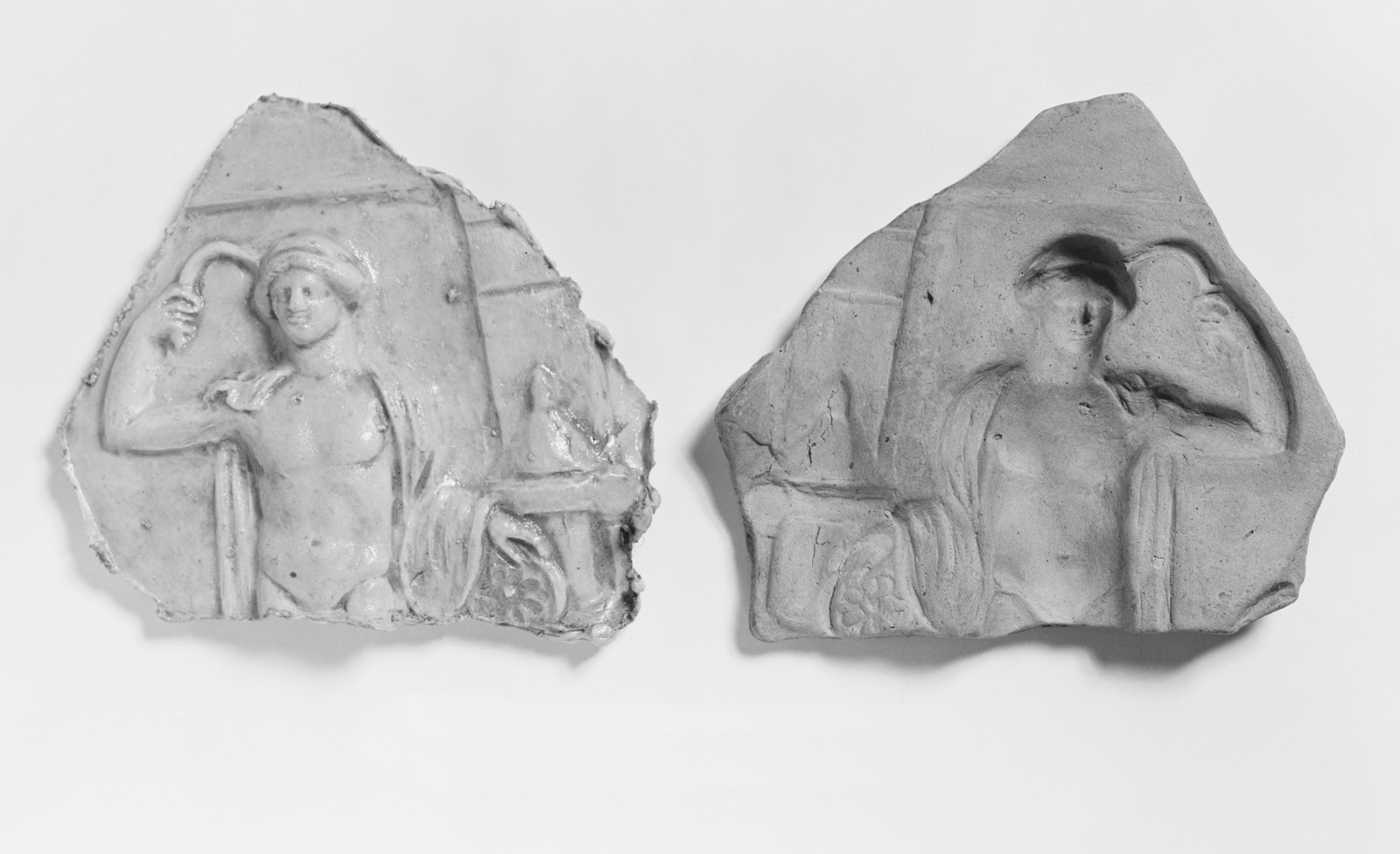
Figure 12: 75.AD.45, H: 12.5 cm 75.AD.45: (fig. 12) Head and torso of a youth holding a strigil in his upraised right hand and a phiale in his left hand. The figure stands within a naiskos. Fragmentary Tarentine mold for a relief plaque that originally depicted both Dioscuri; fourth century BC. See Kingsley 1976, p. 6, no. 11, pl. 11.
-
76.AD.110: Acanthus leaf, vase appliqué; Tarentine; fourth century BC. See Kingsley 1976, p. 13, no. 34, pl. 34.
-
76.AD.111: Backside of a squatting nude figure (silenos?); Tarentine back mold; third–second century BC. See Kingsley 1976, p. 8, no. 16, pl. 16.
-
76.AD.112: Male torso with distended stomach (comic actor); Tarentine front mold; late fourth–third century BC. See Kingsley 1976, p. 12, no. 31, pl. 31 (incorrectly cited as L.74.AD.15).
-
76.AD.113: Small head set within a triangle; Tarentine; fourth or third century BC.
-
76.AD.114: Small bust of a draped woman, broken from a full-figure mold, with string marks at the sides; Tarentine; mid-fourth century BC. See Kingsley 1976, p. 9, no. 20, pl. 20 (incorrectly cited as L.74.AD.12).
-
76.AD.115: Squatting silenos with his arms resting on his knees and holding a volute krater by its handles between his legs; Tarentine front mold; late fourth century BC. See Kingsley 1976, p. 8, no. 15, pl. 15 (incorrectly cited as L.74.AD.18).
-
76.AD.116: Eros astride a dolphin; Tarentine front mold; late fourth century BC.
-
76.AD.117: Seated boy, with his left knee resting on the ground, the right raised, holding a Maltese puppy. There is an inscription on the reverse of the mold: LEONTOS (the shop of Leon). Tarentine front mold; 350–325 BC. See Kingsley 1976, p. 11, no. 27, pl. 27 (incorrectly cited as L74.AD.21); Kingsley 1981, pp. 51–52, no. G.16, figs. 4 and 14 (incorrectly cited as 74.AD.21); and Ferrandini Troisi, Buccoliero, and Ventrelli 2012, p. 184, no. 42 (incorrectly cited as 74.AD.21).
-
76.AD.118: Woman with a melon coiffeur and veil, holding a child on her lap; probably part of a banqueting group, with the child stretching its arms toward a reclining man; Tarentine front mold; late fourth century BC. See Kingsley 1976, p. 5, no. 6, pl. 6 (incorrectly cited as 74.AD.54).
-
76.AD.119: Head of a woman with curly hair, a large nose, and protruding lips; Tarentine front mold; late fourth century BC.
-
76.AD.120: Head, shoulders, and upper right arm of a reclining man wearing an elaborate wreath in his hair, which is parted in the middle and hangs in long tresses over his shoulders. Tarentine front mold; mid-fifth century BC. See Kingsley 1976, p. 4, no. 3, pl. 3 (incorrectly cited as L.74.AD.25).
-
76.AD.121: Seated woman wearing a chiton and high polos. Her lower legs and feet are missing. She holds her garment with her right arm. Possibly a banqueter. Tarentine front mold; mid-fifth century BC. See Kingsley 1976, p. 5, no. 5, pl. 5 (incorrectly cited as L.74.AD.32).
-
76.AD.122: Herakles, with a lion skin over his left shoulder, lower legs and feet missing; Tarentine back mold; 350–300 BC. See Kingsley 1976, p. 10, no. 22, pl. 22 (incorrectly cited as L.74.AD.33).
-
76.AD.123: Frontal left foot for a large sculpture, likely two-thirds life size; Tarentine; fourth century BC. See Kingsley 1976, pp. 8–9, no. 18, pl. 18 (incorrectly cited as L.74.AD.35).
-
76.AD.124: Standing girl wearing a himation; Tarentine front mold; late fourth–third century BC. See Kingsley 1976, pp. 10–11, no. 24, pl. 24 (incorrectly cited as L.74.AD.38).
-
76.AD.125: Nude boy, his right leg advanced, holding an unidentifiable object under his right arm. Tarentine back mold; fourth or third century BC. See Kingsley 1976, pp. 10–11, no. 26, pl. 26 (incorrectly cited as L.74.AD.41).
Metaponto
-
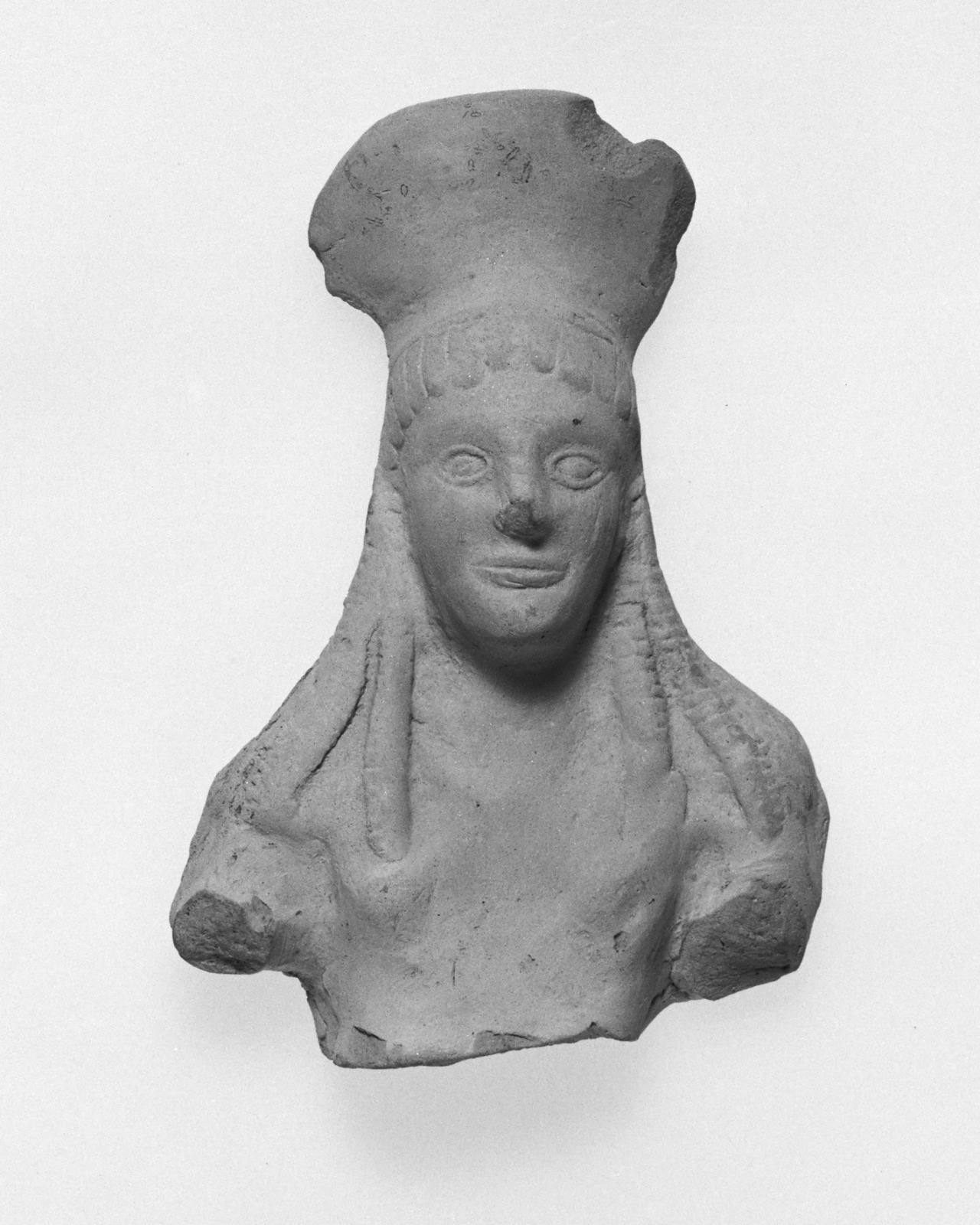
Figure 13: 77.AD.75, 12.3 x 8.4 cm 77.AD.75: (fig. 13) Upper body of a woman or goddess wearing a polos and with long locks of hair over her shoulders; sixth century BC; possibly made in Metaponto. Gift of Gordon McClendon.
-
83.AD.354: Among a group of 292 fragmentary votives described above (see under Taranto), 55 terracottas have been attributed to a workshop in Metaponto. Among the types are women’s heads and figures, seated women, a standing female plaque, a semicircular base with an attached foot, and women wearing a conical polos. They date from the mid-sixth to the early fifth century BC.
Canosa
Several terracotta figures functioned as appliqués on vessels and probably come from Apulian funerary contexts in or near Canosa:
-
80.AE.37: Eros riding an animal, lacking the head, arms, wings, and lower legs; traces of polychrome pigments on baldric (red) and chlamys (pink); third century BC. Gift of David Swingler. See Van der Wielen-Van Ommeren 1985, p. 181, no. 9, fig. 11.
-
80.AE.38.a: Pigeon, hand-modeled, with white slip and polychrome pigments; feathers and collar (red), contour line around wing (blue), neck (purple); early third century BC. Gift of David Swingler. See Van der Wielen-Van Ommeren 1985, p. 180, no. 7, fig. 10.
-
80.AE.38.b: Pigeon, hand-modeled, with traces of polychromy; early third century BC. Similar birds served as attachments on Canosan vases or were placed in graves as offerings. Gift of David Swingler. See Van der Wielen-Van Ommeren 1985, p. 180, no. 8, fig. 10.
-
81.AD.126: Paw of a lion, possibly the foot of a vessel or stand, with three attachment holes on the back; traces of white slip; about 300 BC. Gift of Richard C. Swingler. See Van der Wielen-Van Ommeren 1985, p. 182, no. 11, fig. 13.
-
81.AE.160: Seated Eros, missing forearms, lower legs, and right ring; white slip with traces of polychrome pigments on the hair (red), chlamys (blue), and wing (violet); third century BC. Gift of Robert Blaugrund. See Van der Wielen-Van Ommeren 1985, p. 181–82, no. 10, fig. 12.
South Italy
-
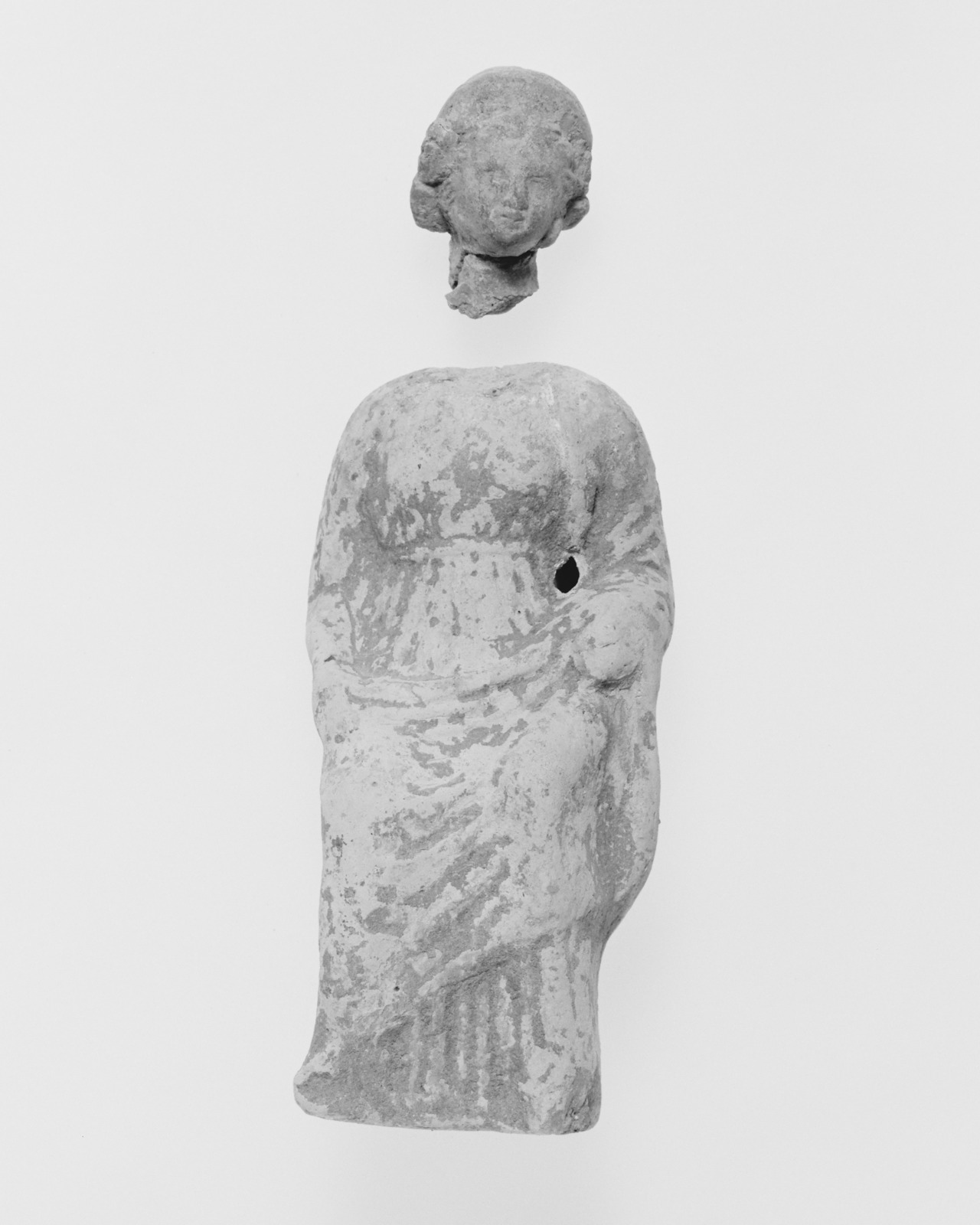
Figure 14: 71.AD.345, H: 4.5 cm 71.AD.345: (fig. 14) Seated goddess, probably Persephone, wearing an epiblema and a high-belted chiton, with her head tilted to the left; traces of polychromy are visible on the surface; third century BC. See Alex G. Malloy, Ancient Art and Antiquities (1971), vol. 1, p. 18, no. 109.
-
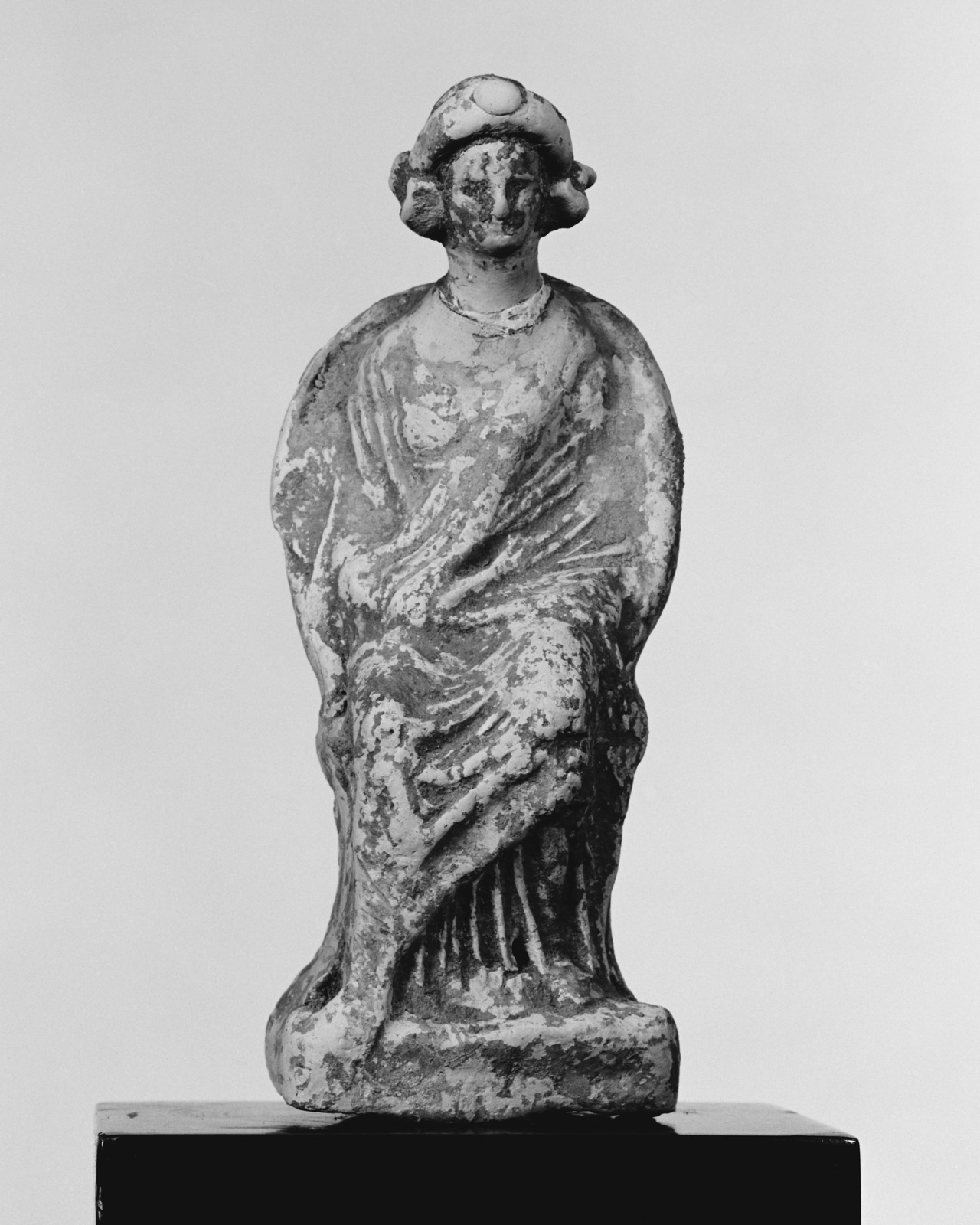
Figure 15: 71.AD.346, H: 16.3 cm 71.AD.346: (fig. 15) Goddess seated on a high, round-backed throne, wearing a chiton, himation, and stephane with a central ornament; large loops of hair at each ear; third century BC. See Alex G. Malloy, Ancient Art and Antiquities (1971), vol. 1, p. 18, no. 108.
-
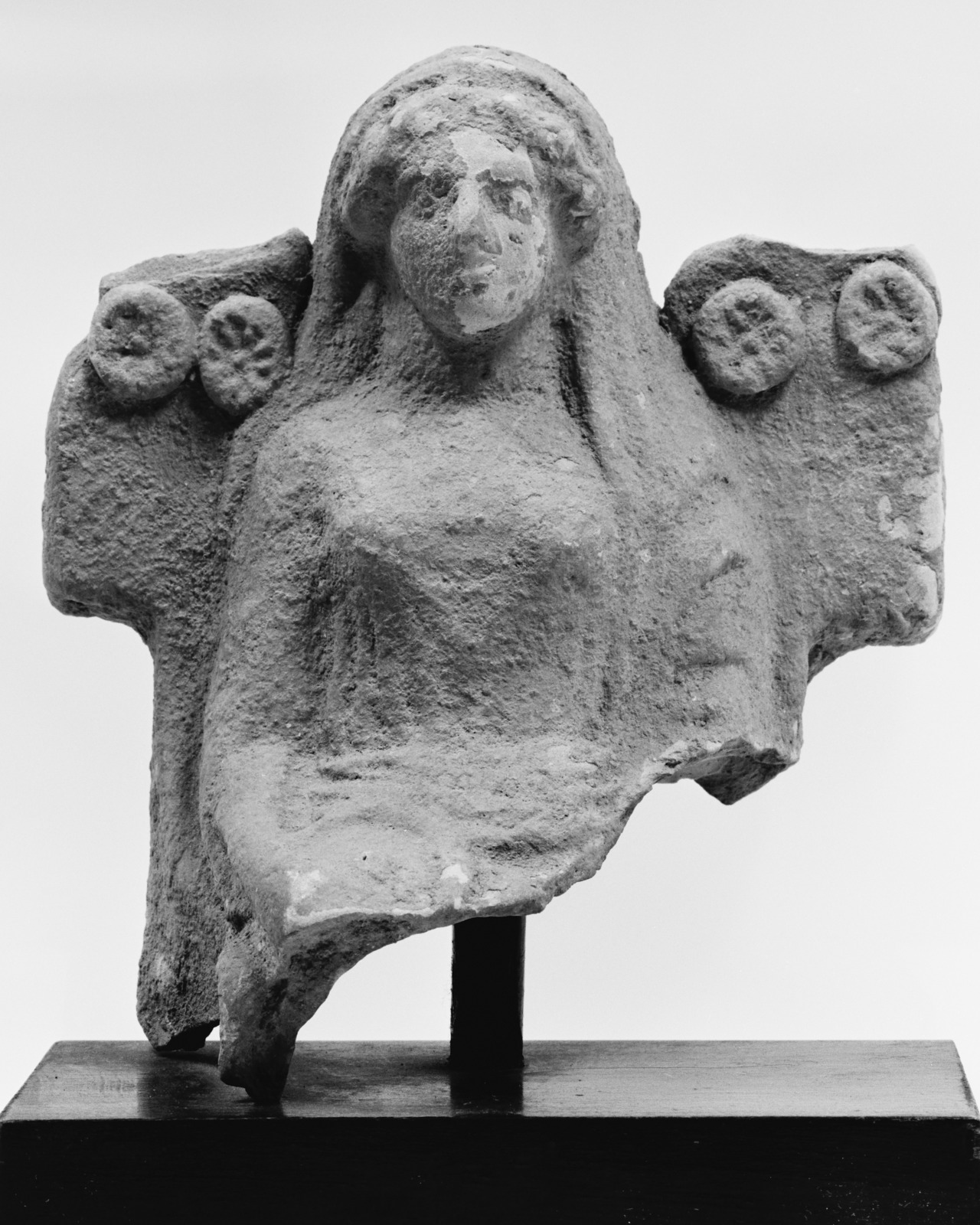
Figure 16: 71.AD.358, 13.5 x 12 cm 71.AD.358: (fig. 16) Upper half of a seated goddess, perhaps Persephone, wearing a himation and veil, with her right arm resting on her lap; the goddess is seated on a throne; pairs of rosettes decorate the backrest on either side of her shoulders; fifth century BC. See Alex G. Malloy, Ancient Art and Antiquities (1971), vol. 1, p. 18, no. 106.
-
73.AD.10.A.1–73.AD.10.P.15: Group of 450 votives dated to the fourth century BC on the basis of associated sherds of an Attic red-figure bell krater, Attic lekythoi, a lamp, and South Italian and Gnathia pottery sherds. In addition to the seven South Italian molds listed above, the lot is almost exclusively composed of female heads, fragmentary figures, and a small number of male heads. Of the fifteen discoid or horse-shoe loom-weights (73.AD.10.I.1–15), several have figural reliefs, with images of a kneeling child holding an animal, Eros on a dolphin, Aphrodite riding a swan, an owl with arms holding a distaff over a kalathos, frontal head of a woman, and two facing busts (the so-called kissers type). The loom-weights belong to a series regularly found at sites in the region of Taranto, Metaponto, and Herakleia, beginning in the second half of the fourth century BC. If they belong with the accompanying group of votive heads, an origin in one of the Greek settlements along the Ionian coast is likely. Acquired from Royal Athena Galleries, New York.
-
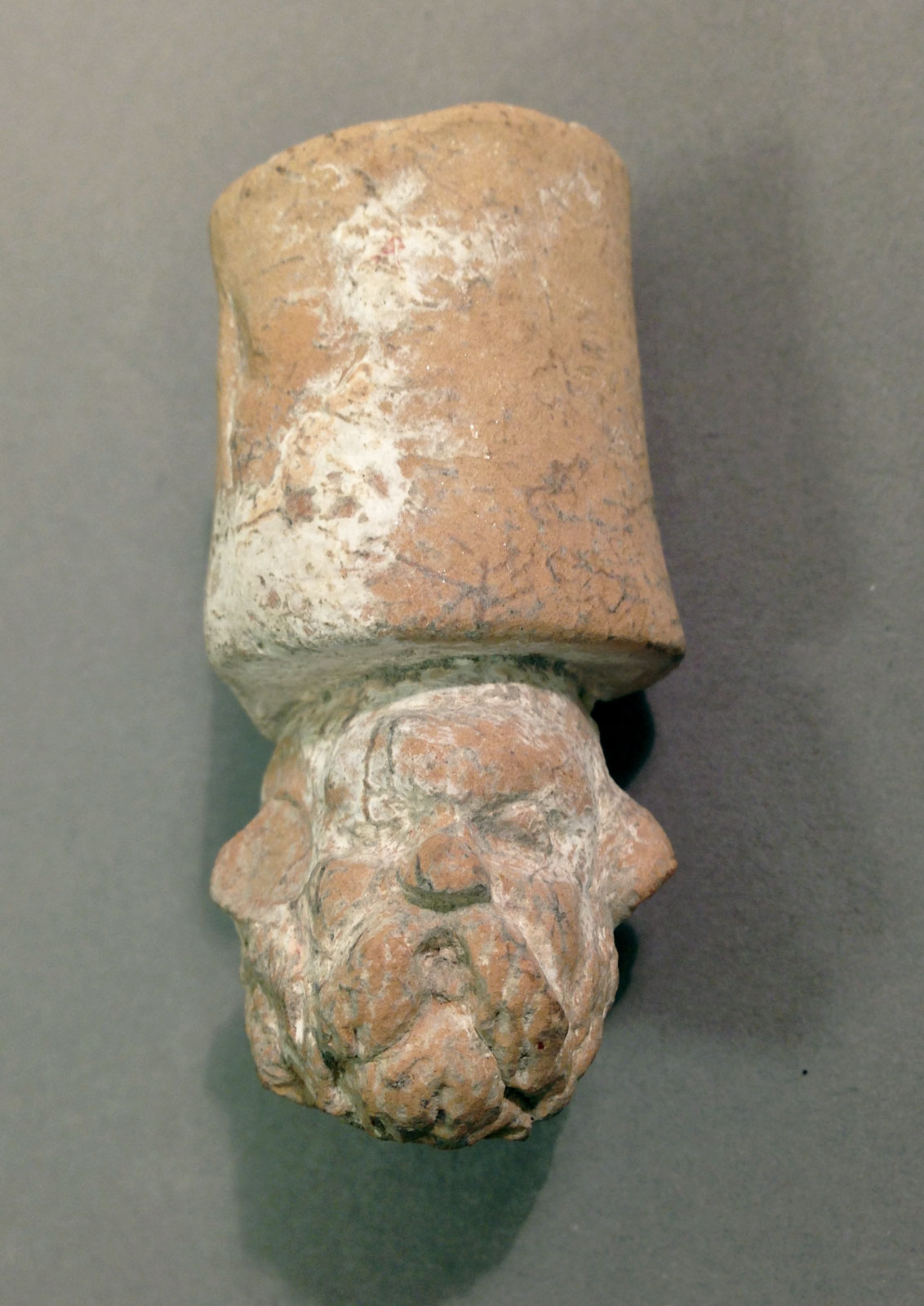
Figure 17: 78.AD.271.24 (reference image), 6.9 x 4.4 cm 78.AD.271.24: (fig. 17) Head of a silenos with a columnar element attached to the top of the head, and traces of white slip; fourth century BC. Gift of Gordon McClendon.
-
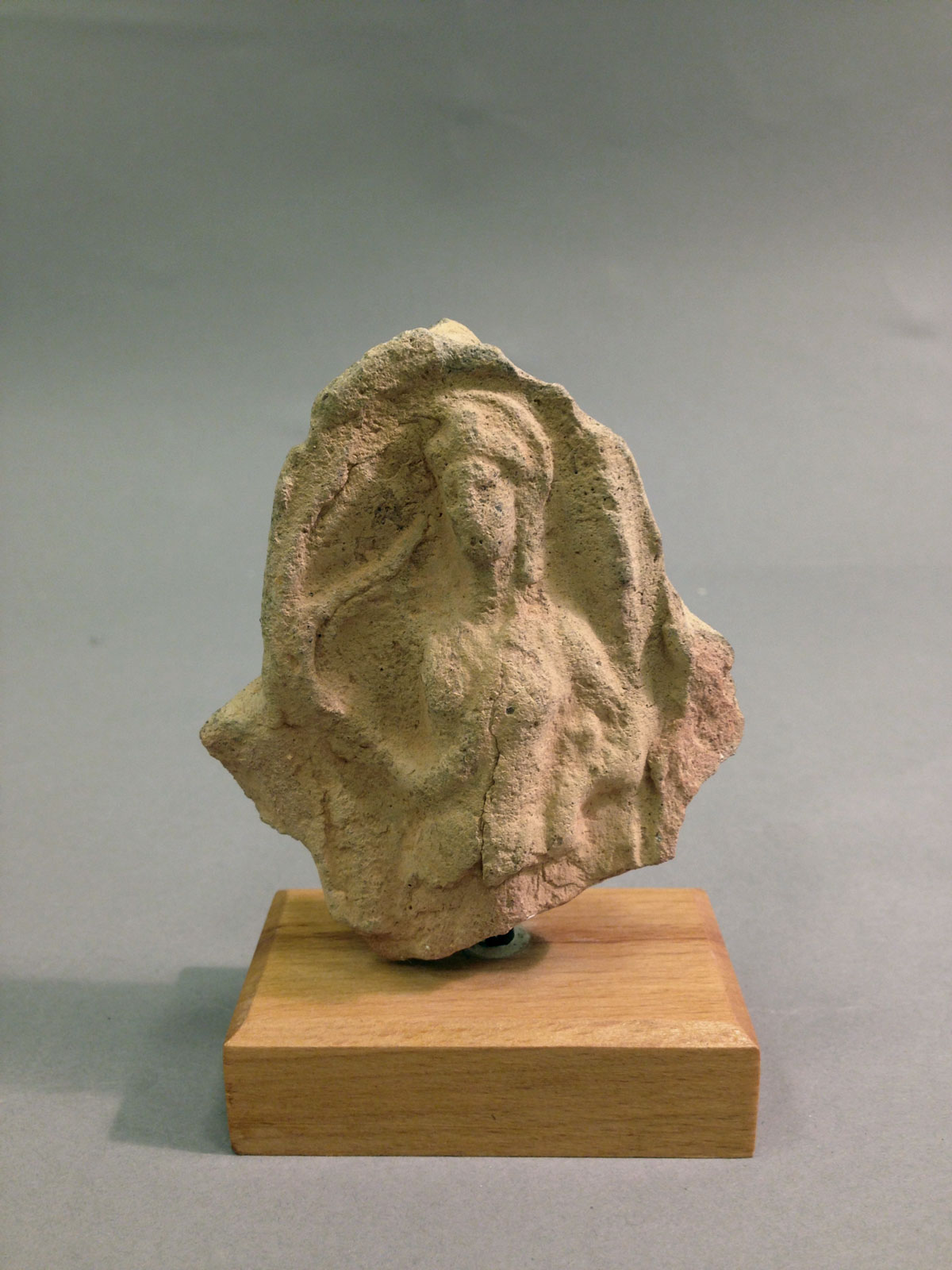
Figure 18: 78.AD.404 (reference image), H: 8.7 cm 78.AD.404: (fig. 18) Votive relief with head and torso of Aphrodite rising from the waves; third century BC. Gift of Malcolm Wiener.
-
98.AD.115: Fragmentary figure of Aphrodite, semidraped; third century BC.
-
98.AD.116: Upper torso of a nude figure of Aphrodite, with left arm raised (missing); third century BC.
-
98.AD.117: Woman standing with left leg advanced and knee bent, wearing a chiton belted under her breasts and a himation, which is draped over the left shoulder and gathered in thick folds around the waist; the head, right arm at the shoulder, left arm at the elbow, and right foot are missing; there is a circular vent hole in the upper back; third century BC.
-
98.AD.118: Head of a woman; fifth century BC.
-
98.AD.120: Frontal head of a woman, with part of the relief panel preserved behind the head and traces of red polychromy at the top; sixth century BC.
-
98.AD.121: Head and neck of a maenad with a melon coiffeur, wearing a wreath of leaves and fruit, a necklace, and a large disc earring in the left ear; third century BC.
-
98.AD.122: Fragmentary figure of Aphrodite, semidraped; third century BC.
-
98.AD.123: Fragmentary standing woman wearing a peplos, holding two pomegranates in her left hand and an alabastron in her right; fragmentary; fifth century BC.
-
98.AD.124: Head and neck of a woman with her hair arranged in a bun at the top of the head; a headscarf is tied in a knot at the peak of the forehead, and there are holes in the earlobes for the attachment of earrings; second century BC.
-
98.AD.130: Head of a woman wearing a large headdress; third century BC.
-
98.AD.144.1–98 and .100: Approximately 100 unrestored fragments belonging to a single figure of a draped woman, perhaps Aphrodite, wearing a chiton belted below the breasts; red pigment on the hair and areas of the drapery; third century BC.
Campania
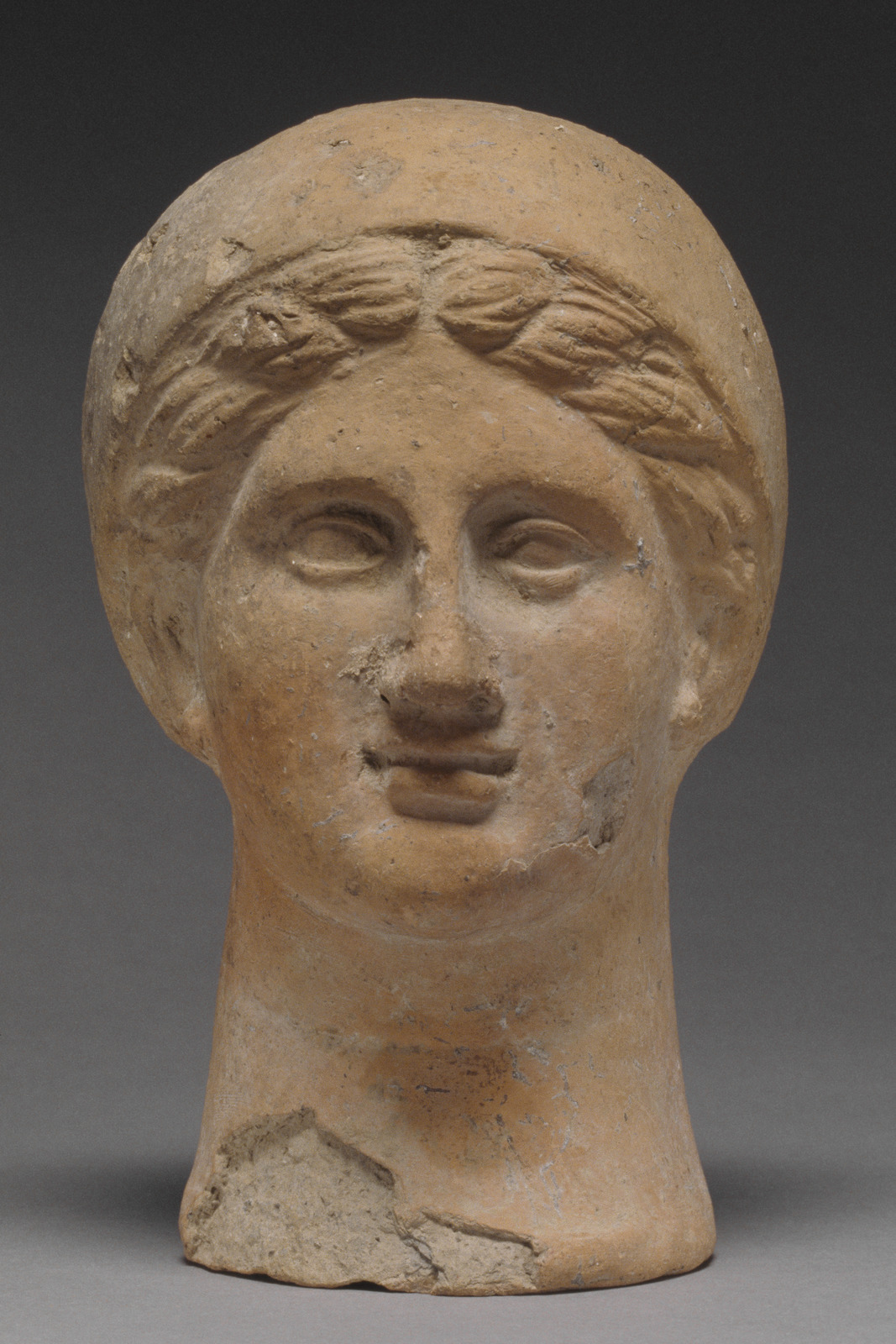
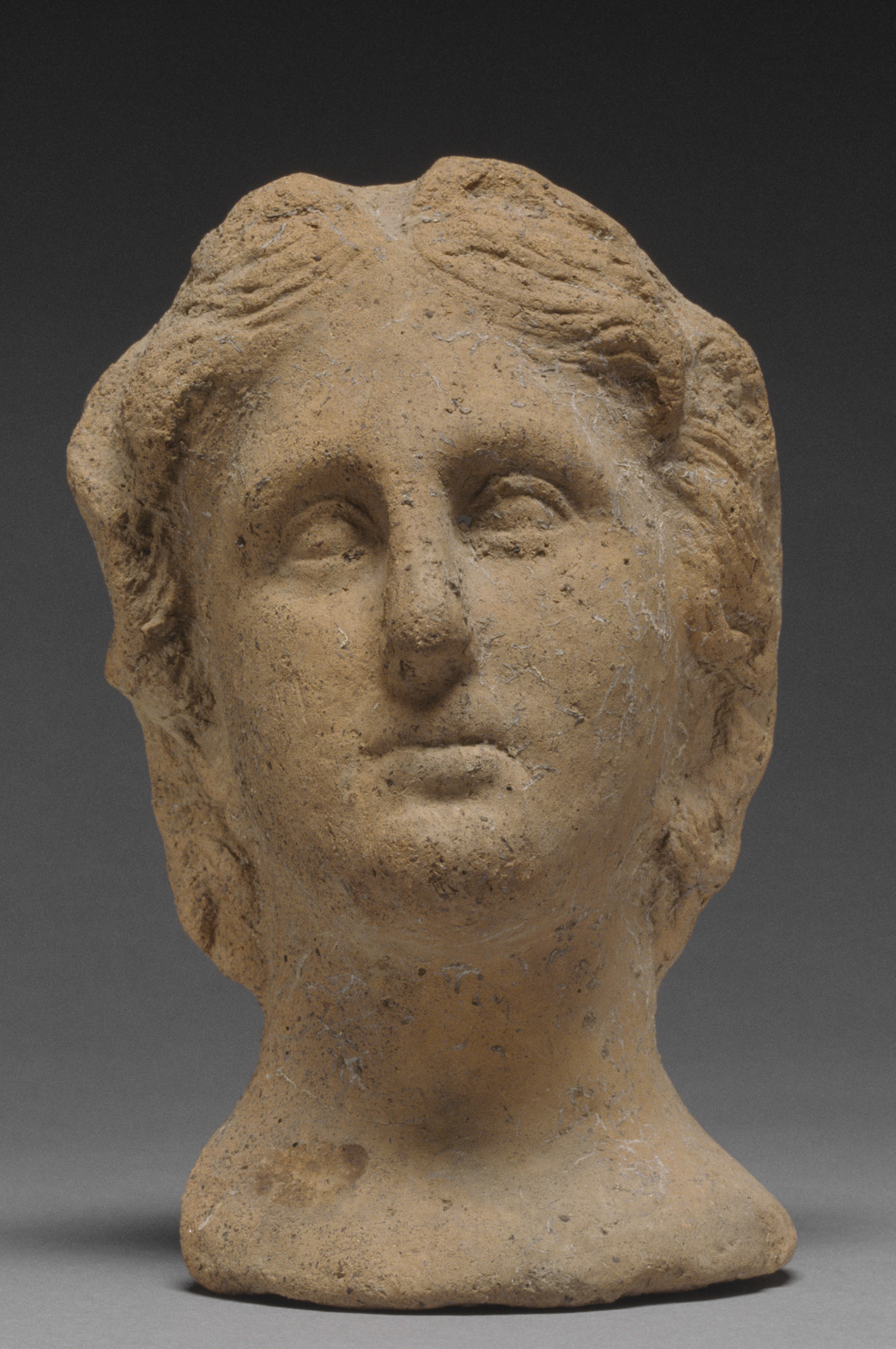
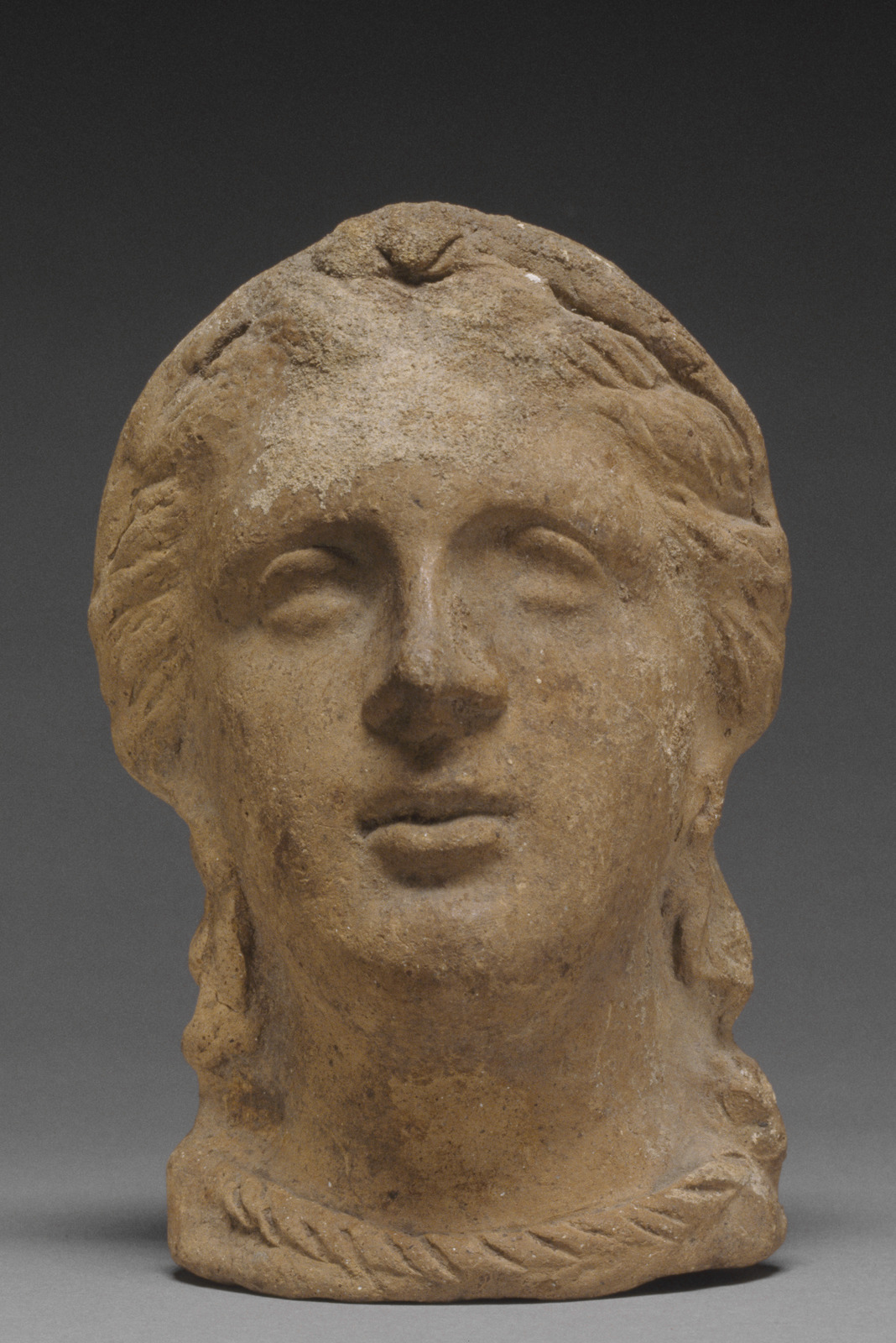
-
71.AD.304: (fig. 19) Head of a woman, with melon coiffeur and veil, and a long neck with incised Venus ring; from a mold series found at Capua; ca. 250–200 BC. See Smithers 1993, p. 26, fig. 18, and Alex G. Malloy, Ancient Art and Antiquities (1971), vol. 1, p. 18, no. 121.
-
71.AD.305: (fig. 20) Head of a woman with disc earrings and a veil covering the back portion of the head, from the same mold generation as an identical head in the Museo Campano in Capua, dated 300–275 BC. See Smithers 1993, p. 24, fig. 14, and Alex G. Malloy, Ancient Art and Antiquities (1971), vol. 1, p. 18, no. 123.
-
71.AD.306: (fig. 21) Head of a woman wearing a veil, a fillet with a central bead, and a coiled torque necklace; stylistically similar to heads in Capua and Cales; 300–250 BC. See Smithers 1993, p. 25, fig. 17, and Alex G. Malloy, Ancient Art and Antiquities (1971), vol. 1, p. 18, no. 122.
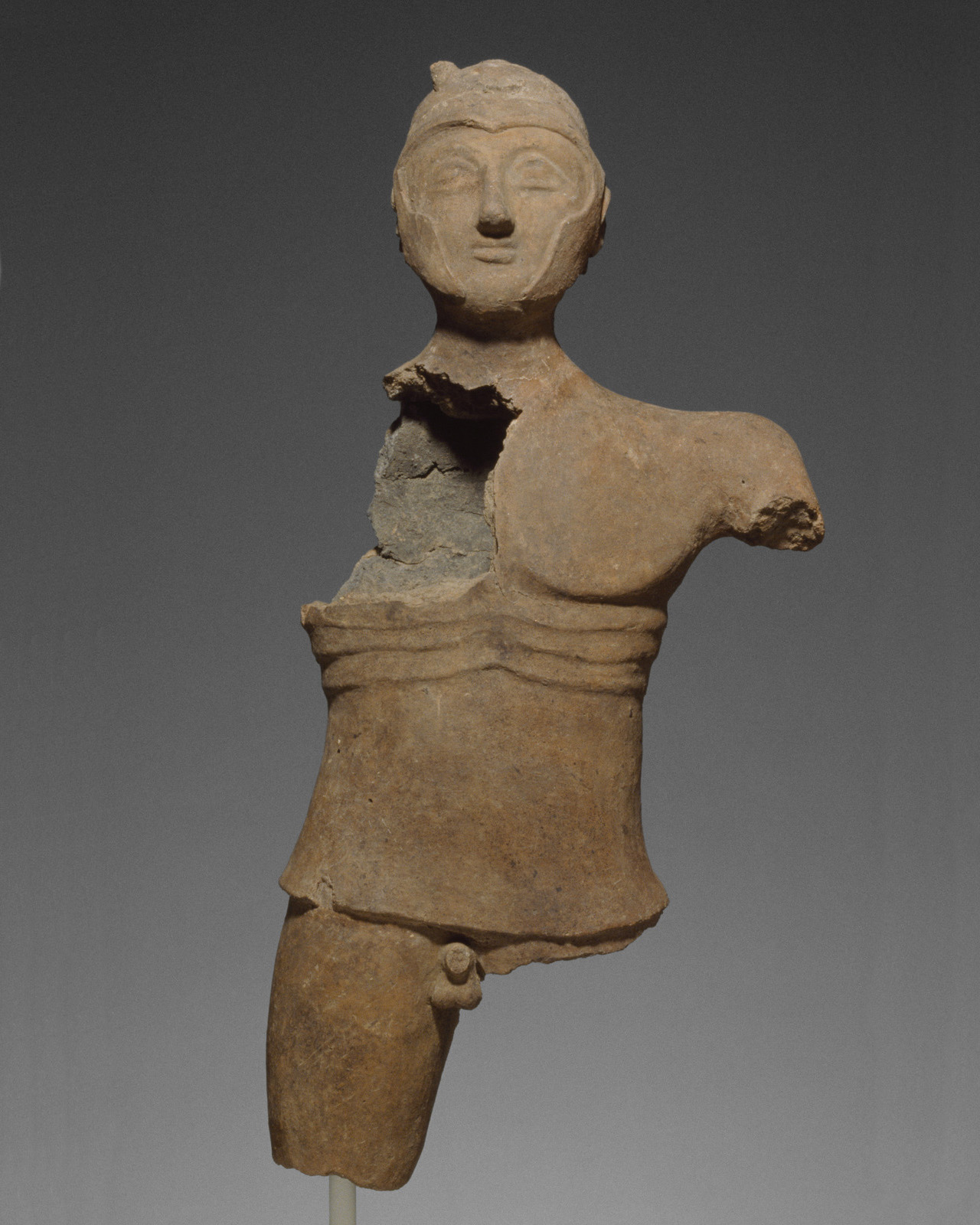
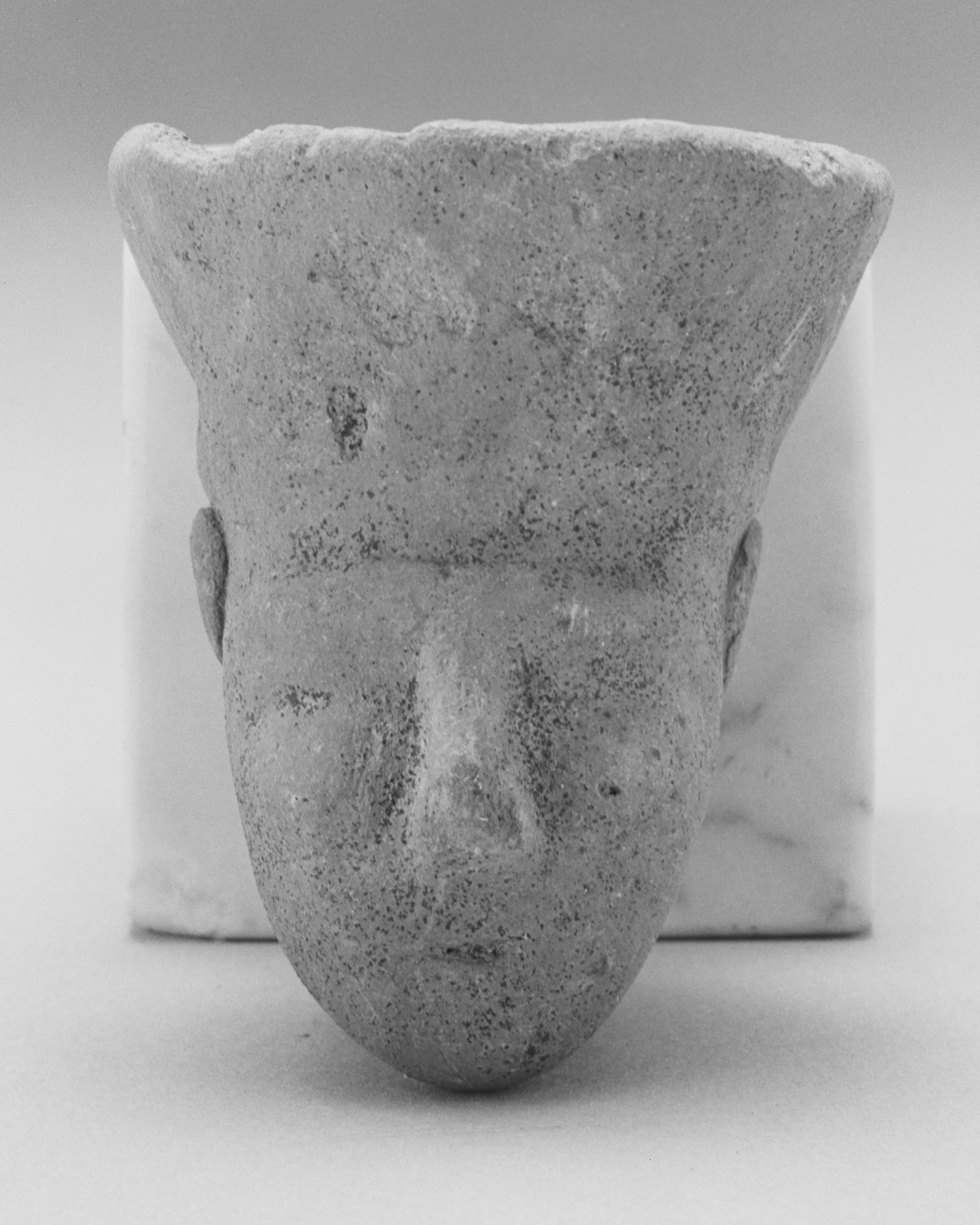
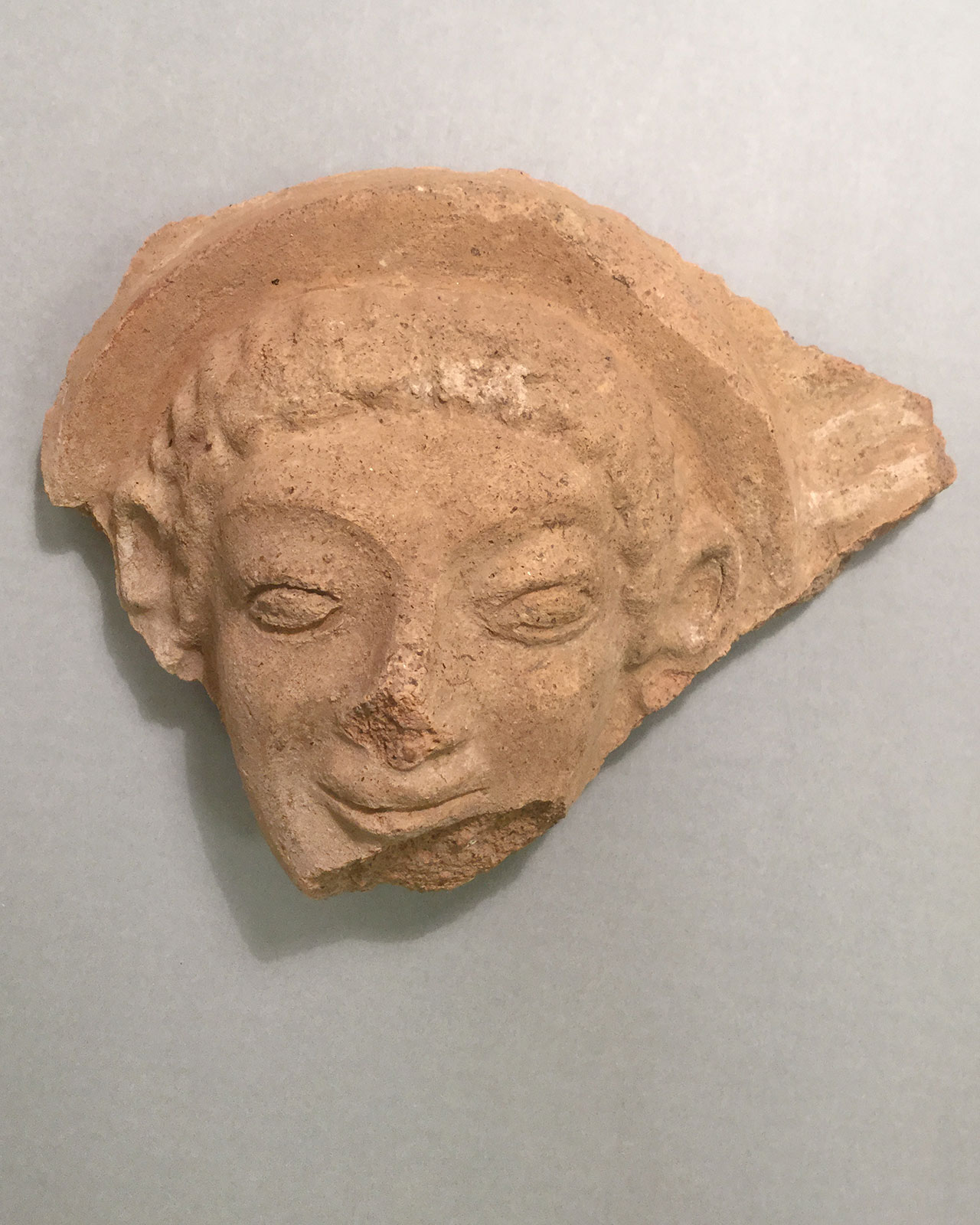
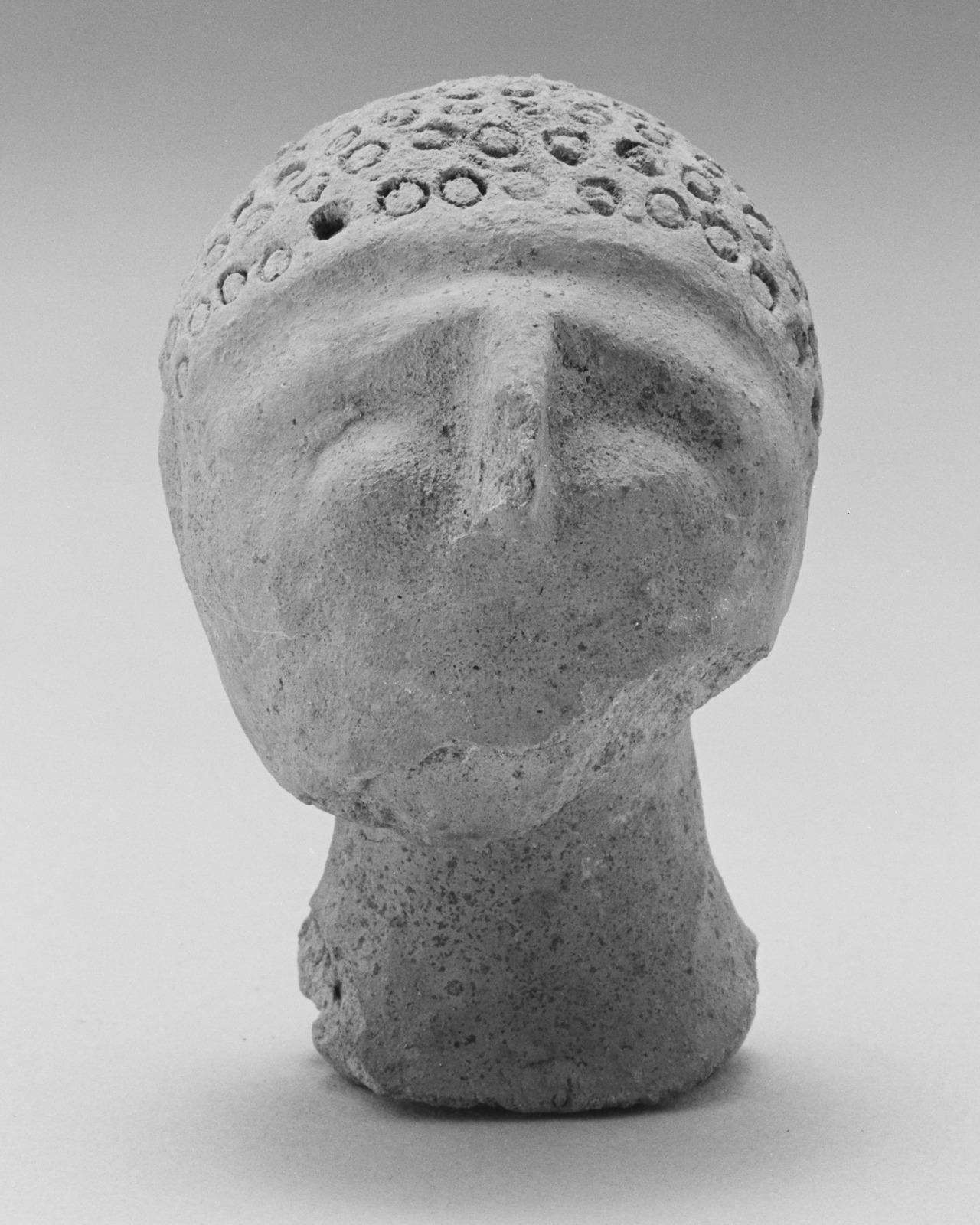
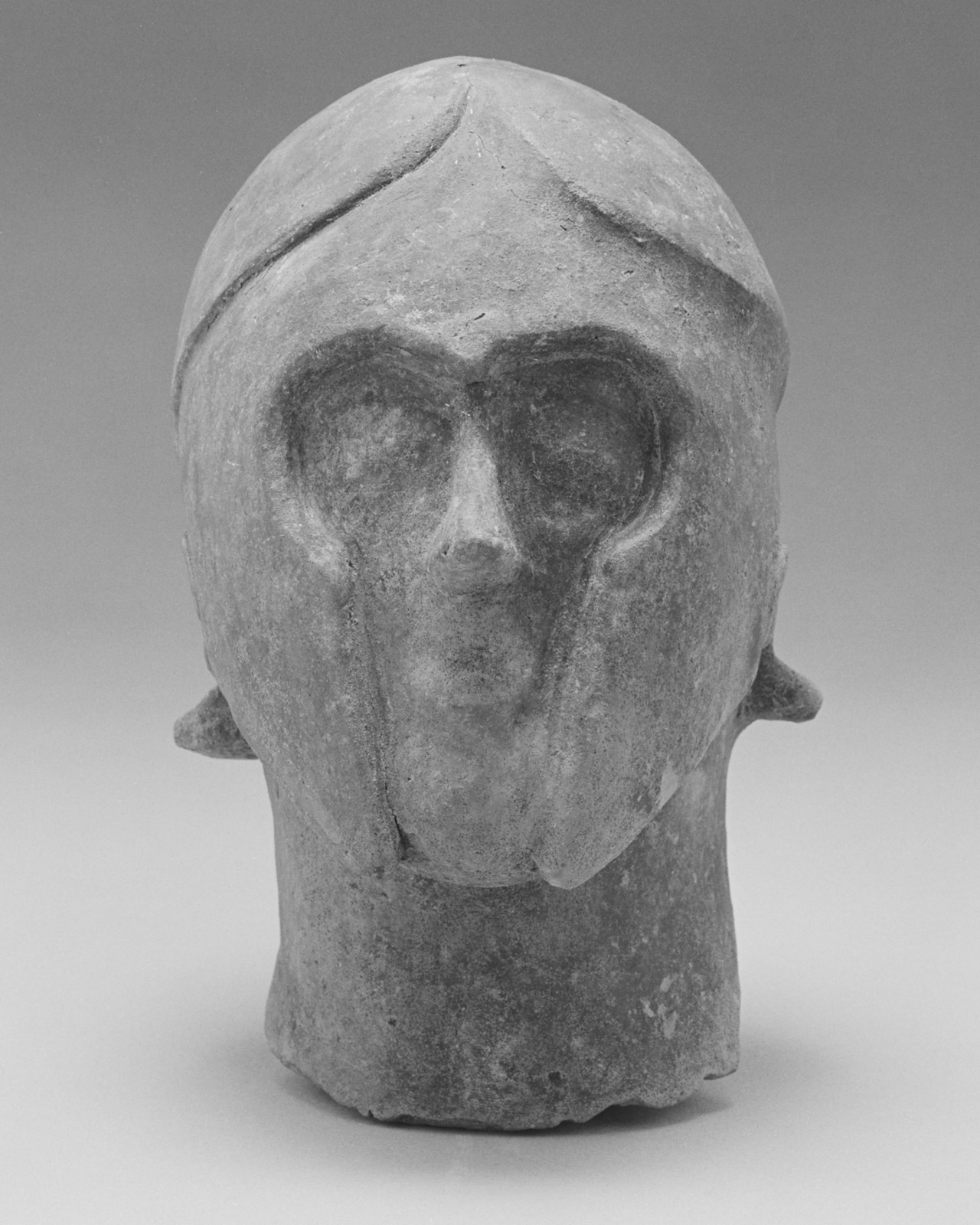
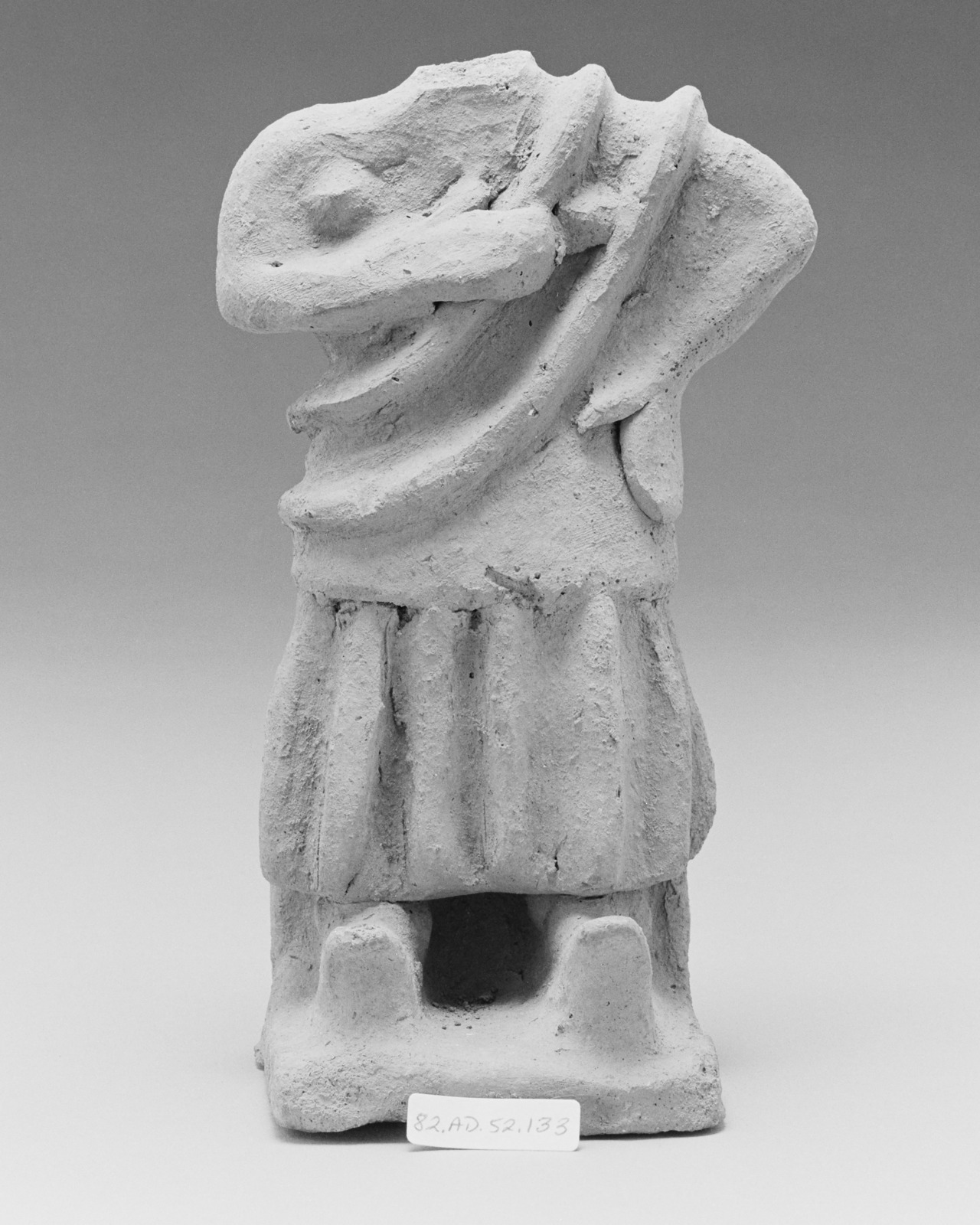
-
82.AD.52.1–153: A large group of votives was donated in 1982 and reportedly comes from Campania. Many of the figures are fragmentary and show evidence of burning. The fabric is reddish brown with black and reflective inclusions, and the statuettes are hand modeled and summarily finished with a tool; there are occasional traces of cream slip and red pigment. Dating to the sixth and fifth centuries BC, the group comprises male and female figures standing on rectangular plinths; heads of women, some wearing a tall, flaring polos (82.AD.52.10; fig. 23); men wearing short, pleated tunics fastened on one shoulder (82.AD.52.133; fig. 27); male heads, some with crested helmets (82.AD.52.129; fig. 26) or other styles of headgear; shields with a fragmentary hand or arm attached to the inside; a seated figure with an animal; a plaque of a standing figure with a snake; and men, both draped and nude, standing with hands on hips (82.AD.58.132 and 135). On some, locks of hair are denoted by circular impressions (82.AD.52.128; fig. 25). A large statuette (82.AD.52.1, H: 56 cm; fig. 22) of a warrior sports a short Italic-type cuirass ending above the genitals and a helmet. In addition to the statuettes, the group includes a Campanian female antefix (82.AD.52.70; fig. 24) crowned with a headband and radiating tongues. The consistency of the fabric, repetition of types, and pattern of damage suggest that the statuettes formed part of a single votive deposit. Similar statuette types are attested in votive deposits from the sanctuary of Juno Popluna at Masseria Soppegna, Fondo Ruozzo, near Teano. Gift of Vasek Polak.
-
98.AD.119: Head of a woman wearing a tall polos; the face is U-shaped, with a prominent pointed nose and ears rendered as flat discs; sixth century BC.
Sicily
-
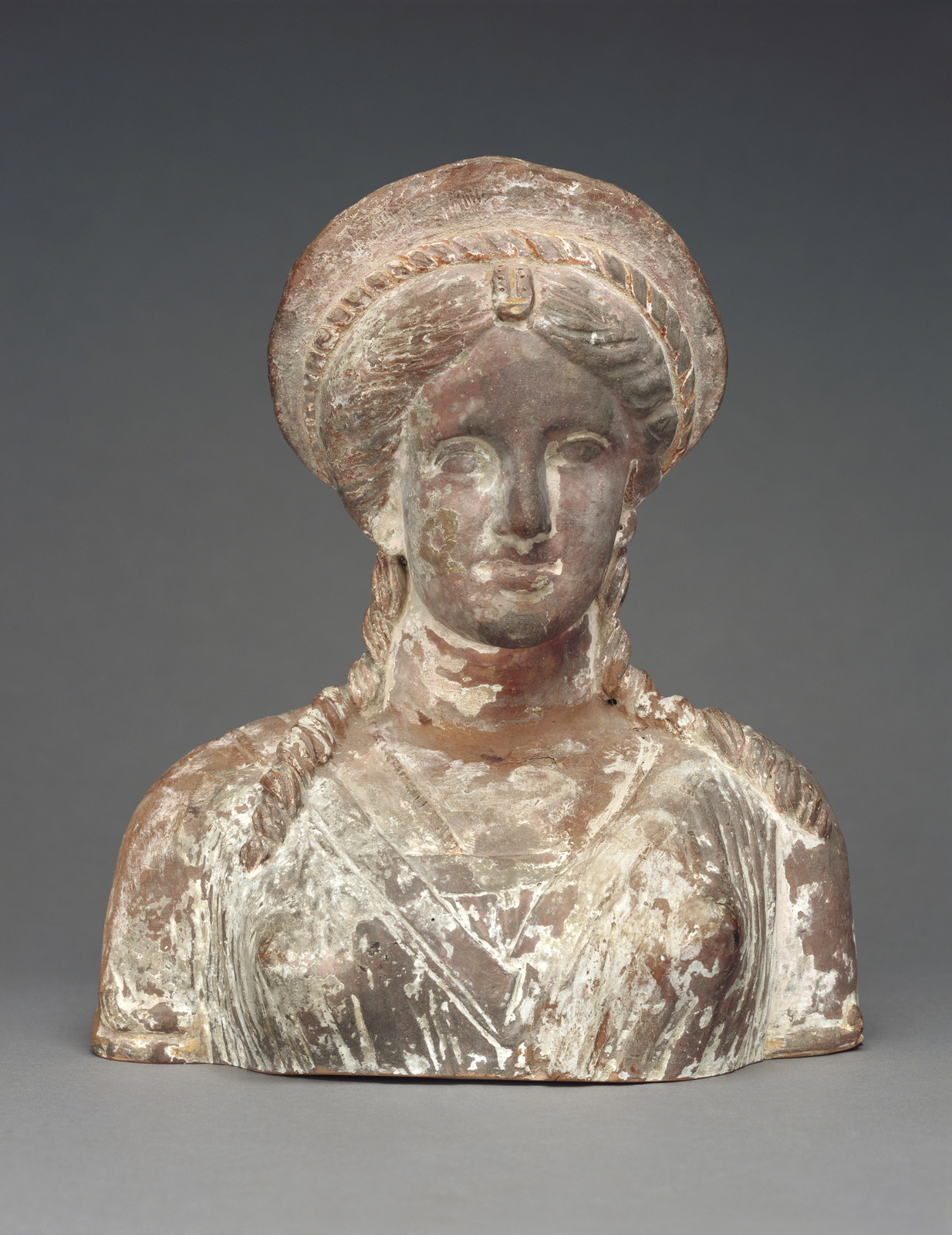
Figure 28: 70.AD.120, 25.7 x 22.2 cm 70.AD.120: (fig. 28) Bust of a woman with coiled locks of hair falling forward over her shoulders, wearing a diadem and necklace, perhaps Persephone; white slip and traces of polychromy, with a circular vent hole in the back of the head and square notch in the rear lower edge of the bust; 300–200 BC; probably from Centuripe. Gift of J. Paul Getty. See G. Buscemi Felice, “Libertini collezionista: Dagli acquisti con Paolo Orsi alle acquisizioni ‘accademiche’; ‘Controfigure archeologiche’ e pasticci nella collezione,” in G. Biondi et al., Il Museo di Archeologia dell’Università di Catania: Collezione Libertini (Rome, 2014), p. 35, n. 59, fig. 11. Buscemi suggests that this bust, which has been significantly restored, is a modern reproduction; research is ongoing.
-
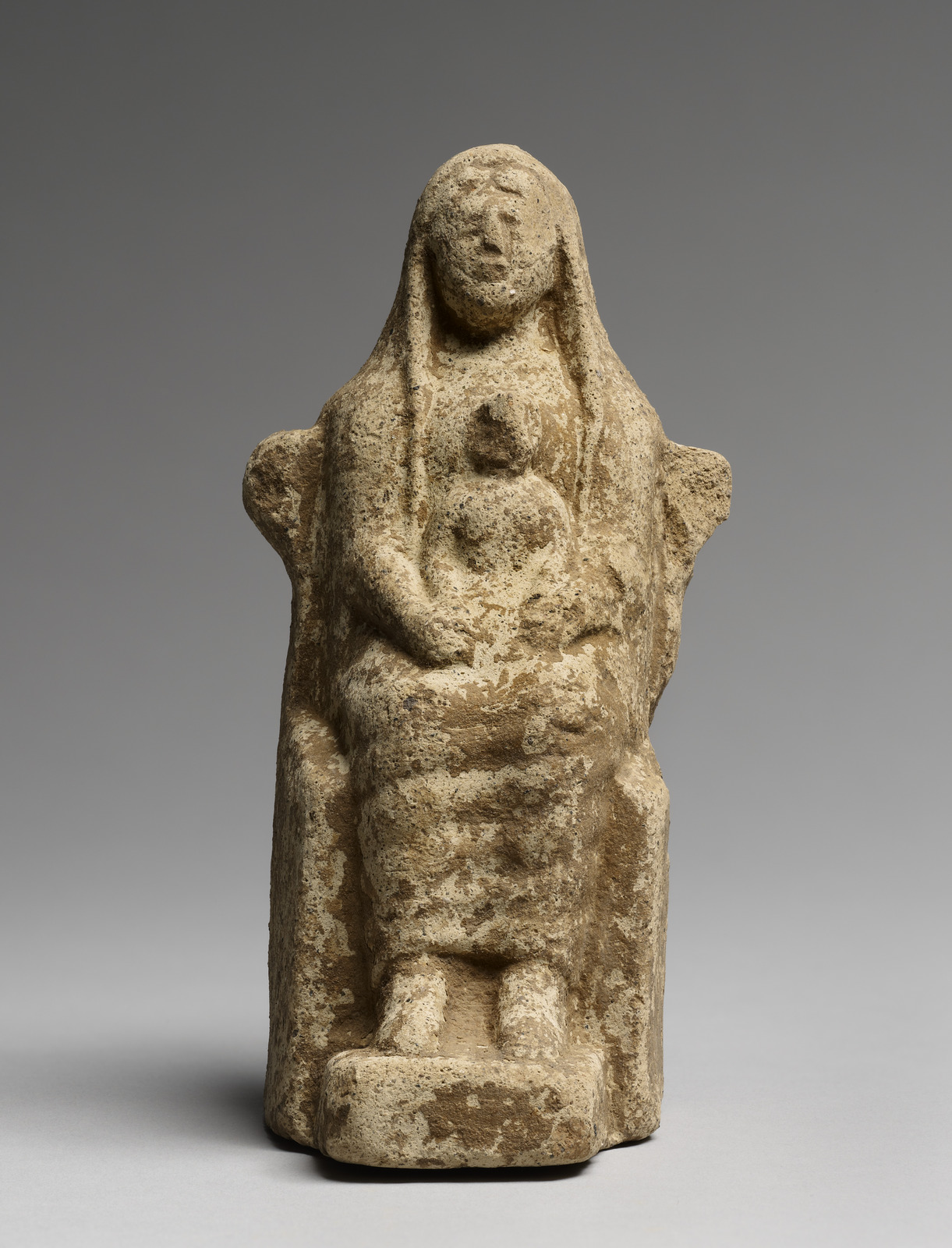
Figure 29: 71.AD.141, 13.6 x 6.9 x 6.5 cm 71.AD.141: (fig. 29) Seated woman wearing a veil and holding on her lap a child who faces forward; sixth–fifth centuries BC; reportedly from Gela. Acquired from the Royal Athena Galleries, New York.
-
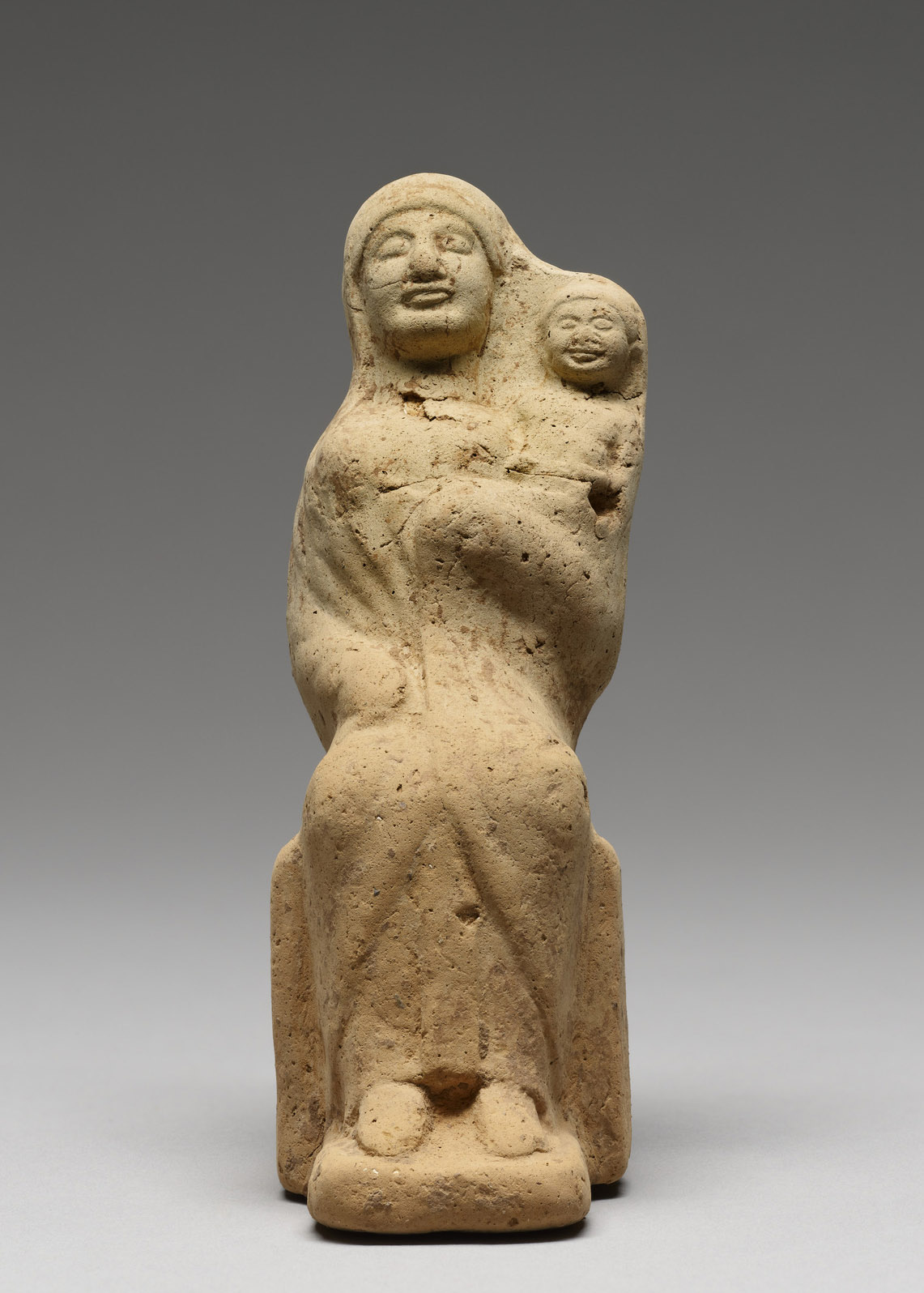
Figure 30: 71.AD.347, 11 x 3.8 x 6 cm 71.AD.347: (fig. 30) Seated woman wearing a veil and long himation, holding a child up in front of her left shoulder; fifth century BC; reportedly from Gela.
-
75.AD.34: Fragmentary head of a woman with large eyes, a bulbous nose, and thick lips; fifth century BC. Gift of Fred and Virginia M. Bromberg, Bay Shores, NY.
-
78.AD.345: Woman holding a child up in front of her left shoulder; fifth century BC; reportedly from Gela.
-
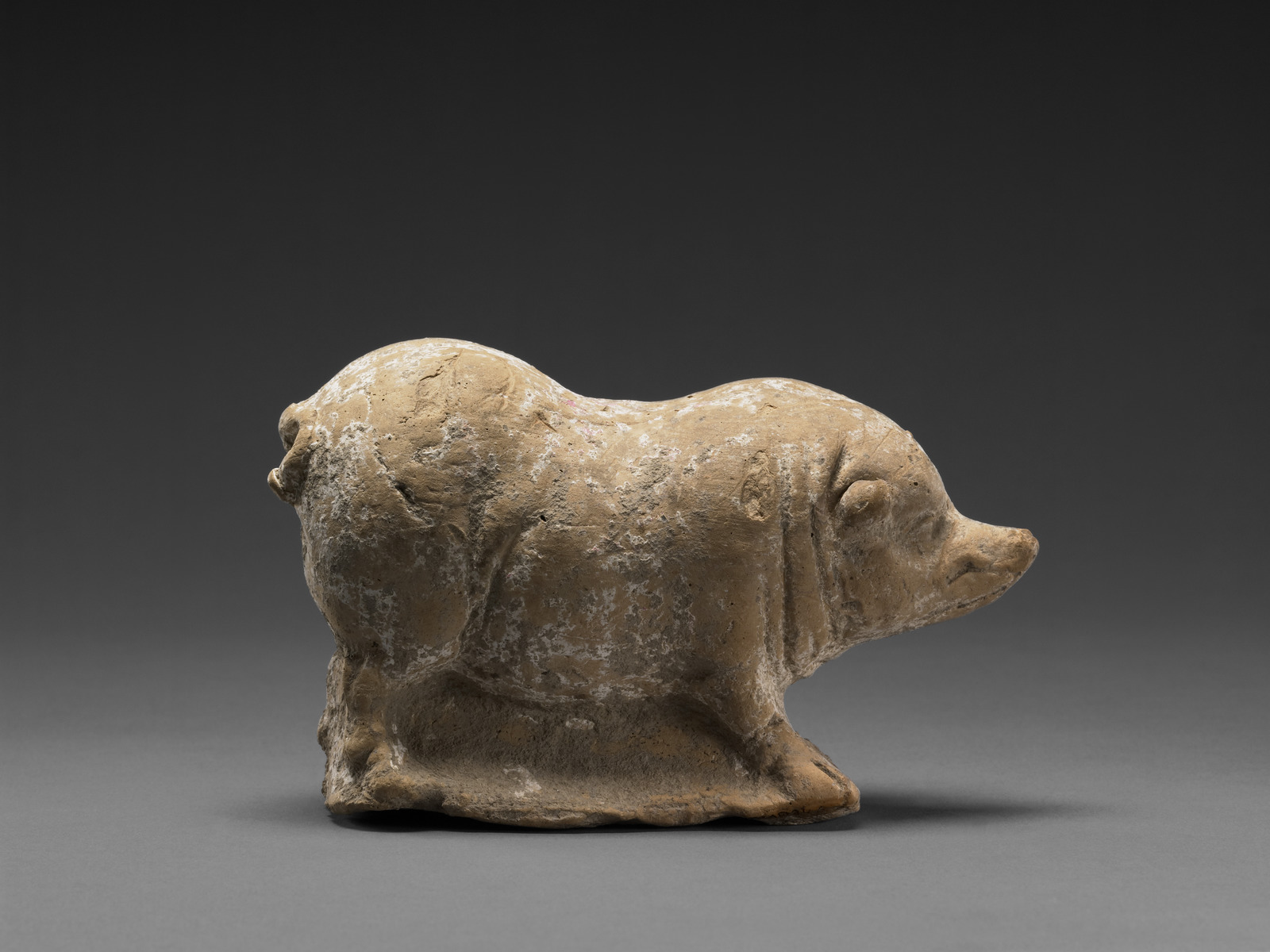
Figure 31: 78.AD.346, 8.3 x 5.4 x 13.5 cm 78.AD.346: (fig. 31) Rattle in the shape of a pig; with white slip and pink pigment; third century BC; probably made in Centuripe. Gift of David Collins.
